The Grand Palace complex in Bangkok was founded in 1782, which I have already written about in https://www.svudapodji.com/en/thailand-6/. It combines the Wat Phra Kaew temple, which I visited first, as described in the previous sequel of my travel stories, and a section with royal residences, throne halls and some government offices. In fact, the entire complex is named the Grand Palace after this second part that is explored during the visit.
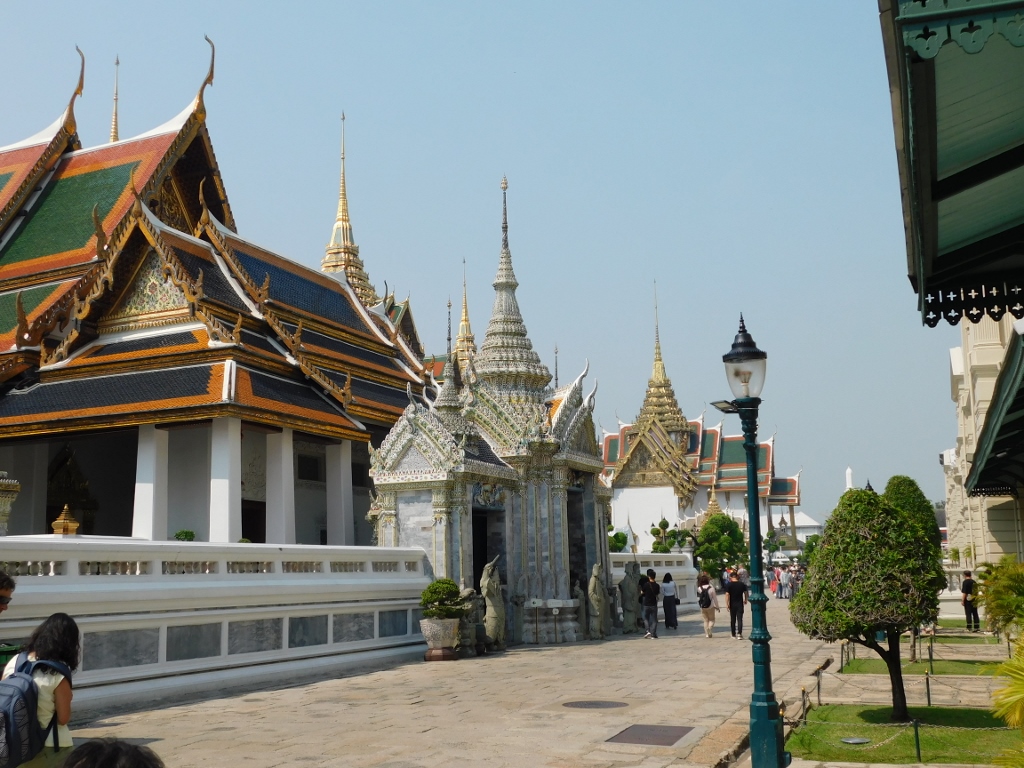 Grand Palace, a detail
Grand Palace, a detail
It needs to be said right away that the majority of the palace complex is closed to the public. Visitors can only walk along a wide path where they can see several exceptionally beautiful structures. The visit is well worth the effort.
The construction of the palace began in 1782 when Bangkok (then known as Rattanakosin) became the capital of the present-day Thailand and King Rama I established the Chakri dynasty. Until 1925, the palace was used by the king, the royal family and the government. That year, they mostly moved to other residences and in 1932, when the absolute monarchy was abolished and Thailand became a constitutional monarchy, all government agencies completely vacated the palace. However, the Grand Palace remains the official residence of the Thai monarch.
The Grand Palace complex includes numerous buildings, pavilions and halls, interspersed with gardens and courtyards. The tour begins with the Phra Maha Monthien group, i.e., from a couple of parts of this group.
While various structures within the Grand Palace and some parts of this group were mentioned in the materials I used, the point is that most of them are closed to visitor, and can only be viewed from the outside. The first structure you pass by is the Amarindra Vinichai building, constructed in 1782.
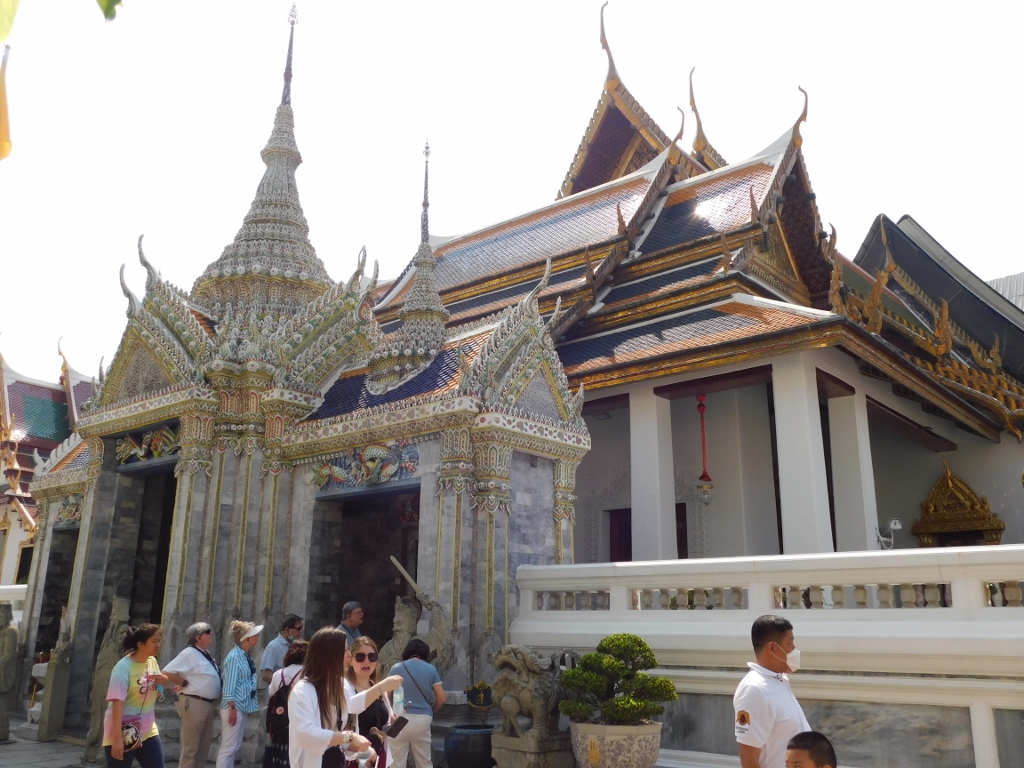 Amarindra Vinichai
Amarindra Vinichai
The Thai kings used it for formal audiences and today it is used for various official ceremonies such as coronations and the celebration of the king’s birthday, among others. Here it is possible for the visitor to get to the entrance in front of which there is a large framed photograph depicting the throne located inside the building.
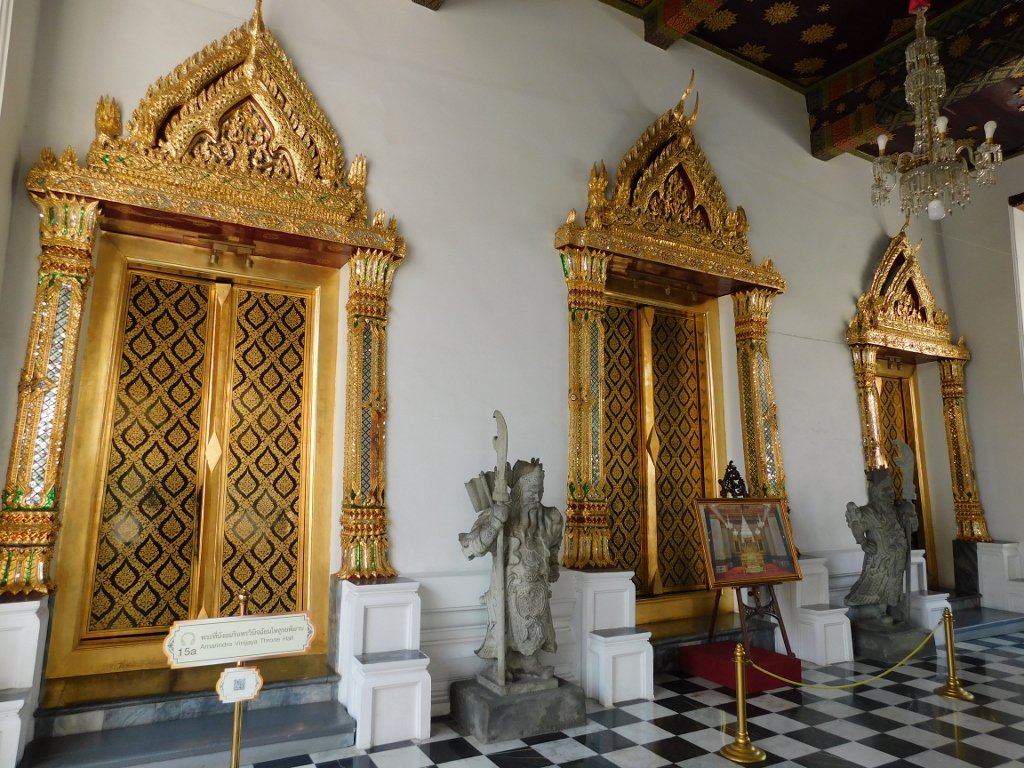 Amarindra Vinichai, a detail
Amarindra Vinichai, a detail
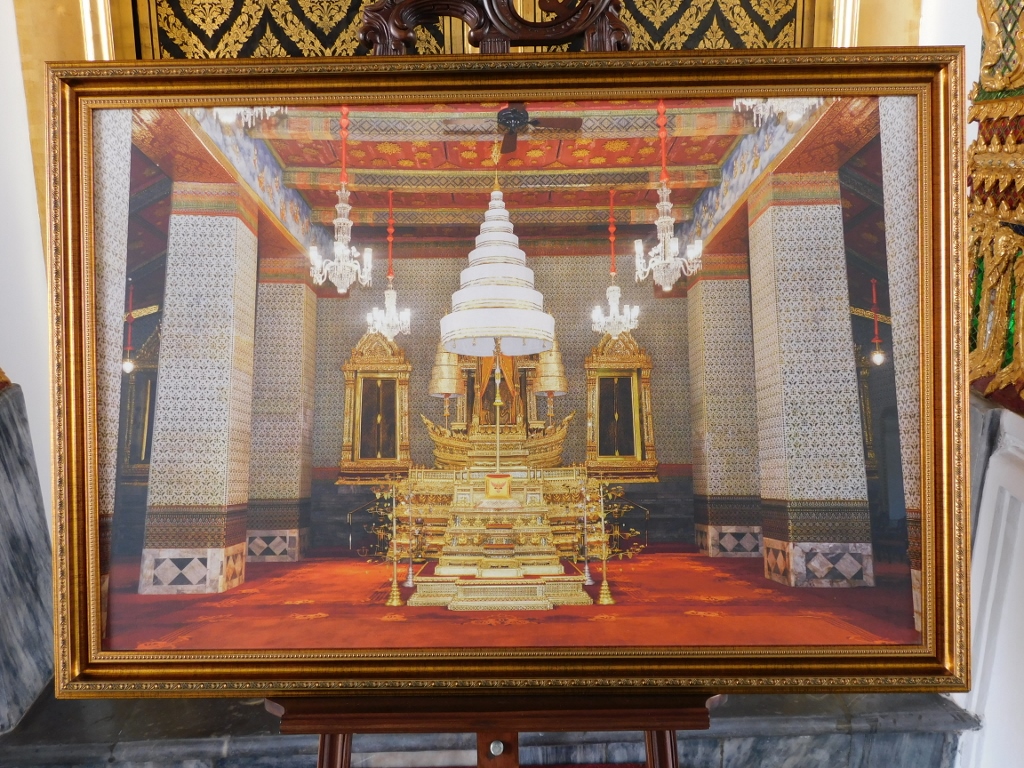 Amarindra Vinichai, a detail
Amarindra Vinichai, a detail
Next is the Dusita Phirom Hall, which the king used in order to change whenever he went on a tour or returned. The king would transfer from one place to another either by being carried in a palanquin or by riding an elephant. Next to this structure is a platform that the king used when ascending or descending from an elephant.
In the next photo, this hall is on the left and I will talk about the impressive buildings visible on the right soon.
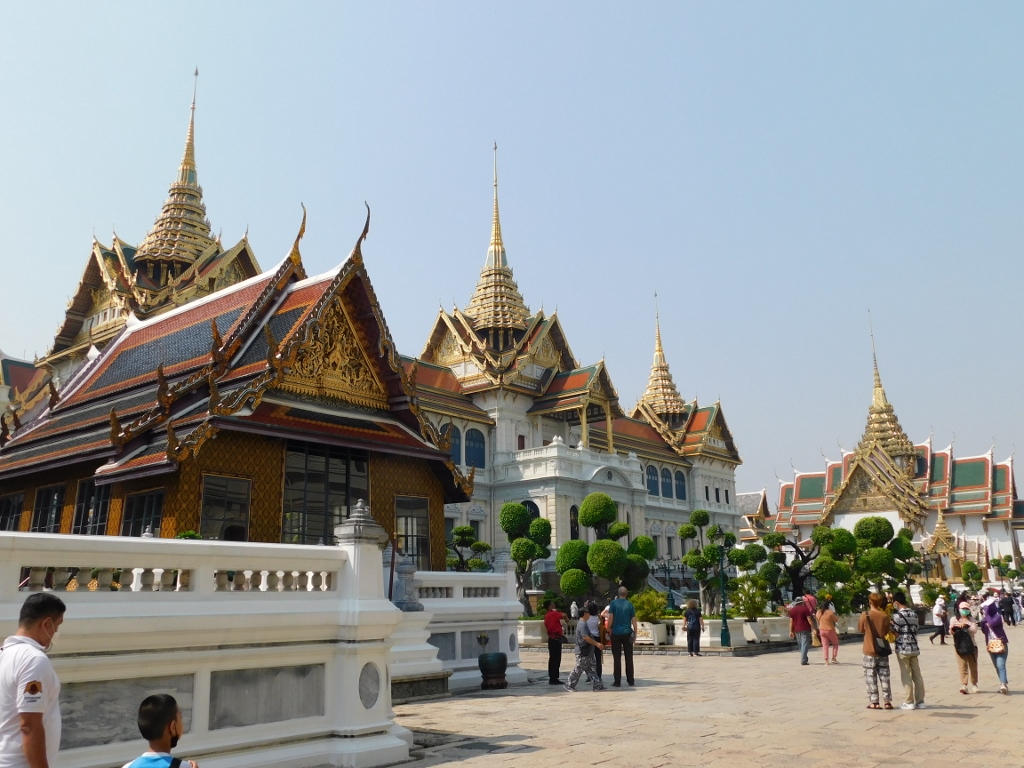 Grand Palace, a detail
Grand Palace, a detail
Once you pass the Dusita Phirom Hall, you should look back because there are a few more important structures, although not all are easily visible due to the wall. I must admit that it became extremely hot here. I was outdoors, without any shade and I didn’t feel the need to go into too much detail. In other words, I wanted to finish the tour as quickly as possible.
In the next photograph, on the left-hand side there is the Dusita Phirom Hall and right next to it, in the middle, is the platform for mounting an elephant. On the right-hand side of the photo, with the golden roof, is the building that served as a chapel where the urns of the first three kings and several members of the early Chakri dynasty were kept.
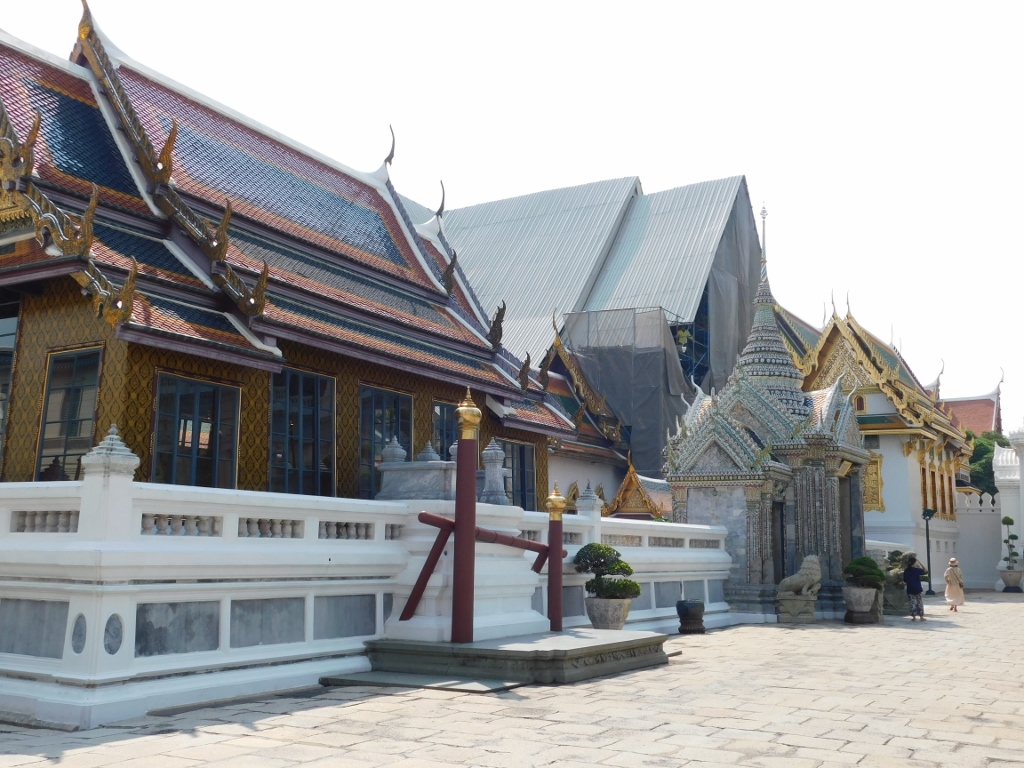 Grand Palace, a detail
Grand Palace, a detail
Still, the most striking building within the Grand Palace complex, which you can certainly see well, is the Chakri Mahaprasat, completed in 1882. It harmoniously blends traditional Thai architecture with Western influences.
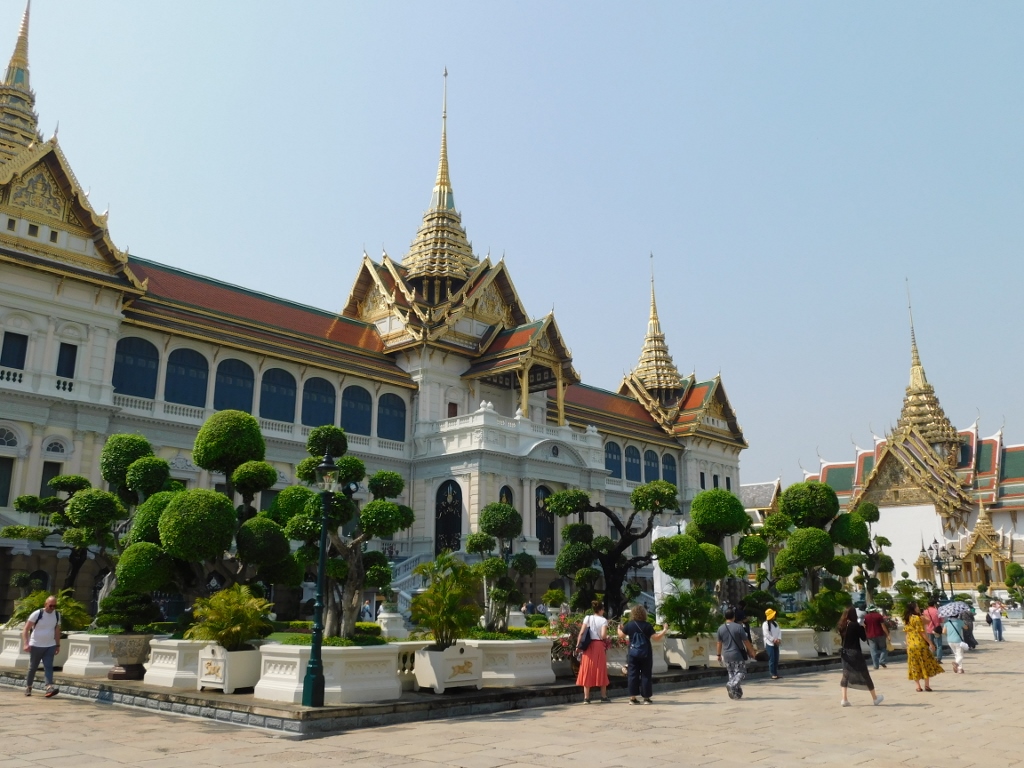 Chakri Mahaprasat
Chakri Mahaprasat
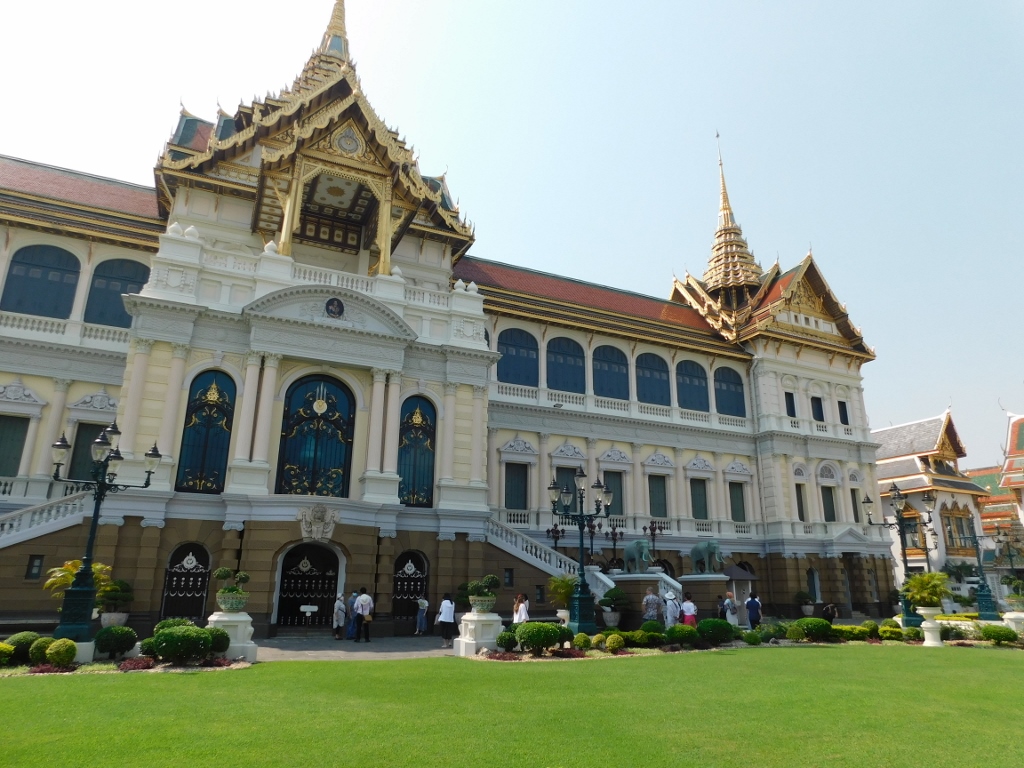 Chakri Mahaprasat
Chakri Mahaprasat
The original design by a British architect included three domes on top of this impressive building, but it was modified to align with Thai tradition, resulting in prasats or prasat spires being erected.
King Rama V (b/r 1853/1868-1910) had his official residence here and today the building is used for state banquets. I found it interesting, for instance, to read that a room in the central part of the building has been transformed into a temple where the ashes of several kings and principal queens are kept. Additionally, what is visible from the visitor walkway is only a part of the entire complex, which has a very intricate layout.
In my eagerness to get out of the sun quickly, I didn’t bother about taking a panoramic shot of this building; instead, I captured it at an angle. However, this turned out well because the photo also shows the next building I approached that is also considered very significant. It is the Dusit Maha Prasat Hall – on the right-hand side of the photo.
 Chakri Mahaprasat and the Dusit Maha Prasat Hall
Chakri Mahaprasat and the Dusit Maha Prasat Hall
The Dusit Maha Prasat Hall is one of the buildings originally erected during the reign of Rama I. Above the tiered roofs, at the crossing, a gilded prasat was raised – a richly adorned multi-tiered spire. I’ve mentioned earlier that this tower form atop the roof symbolises the mythological Mount Meru and the centre of the universe.
Next to the hall is the Aphorn Phimok Prasat Pavilion (seen in front of the large hall in the photo below).
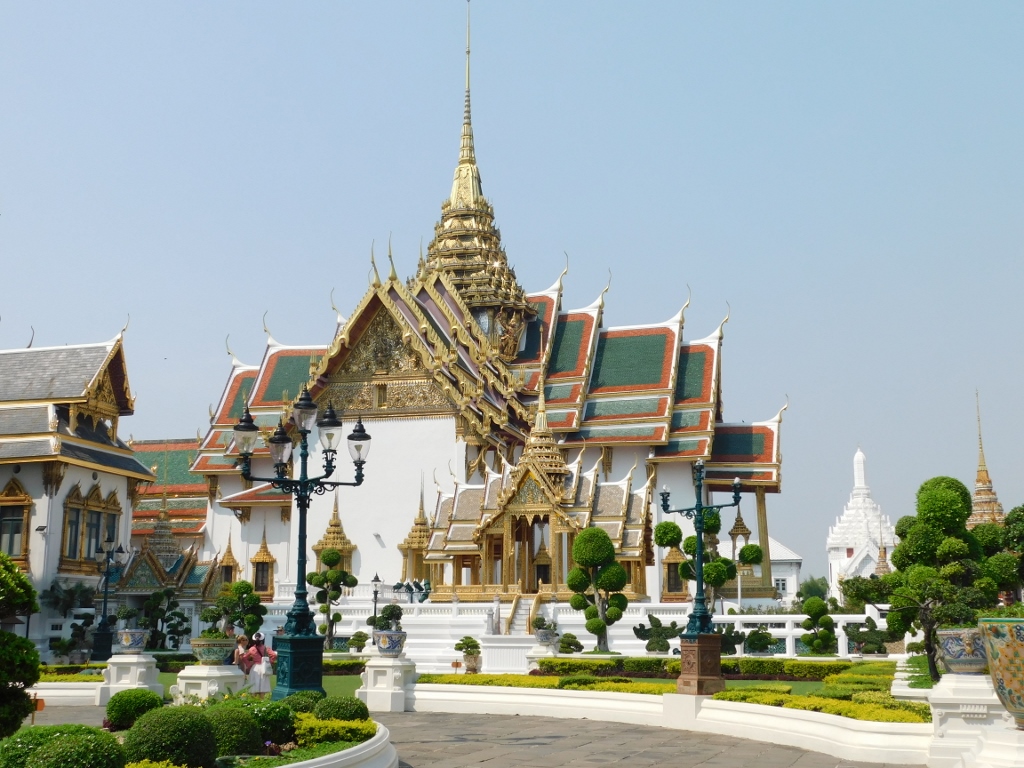 Dusit Maha Prasat Hall
Dusit Maha Prasat Hall
The hall originally served as the venue for royal audiences and later functioned as a royal funerary hall, where the coffin of a deceased monarch or a royal family member would be displayed for visitors to pay their respects during the lying-in-state ceremony.
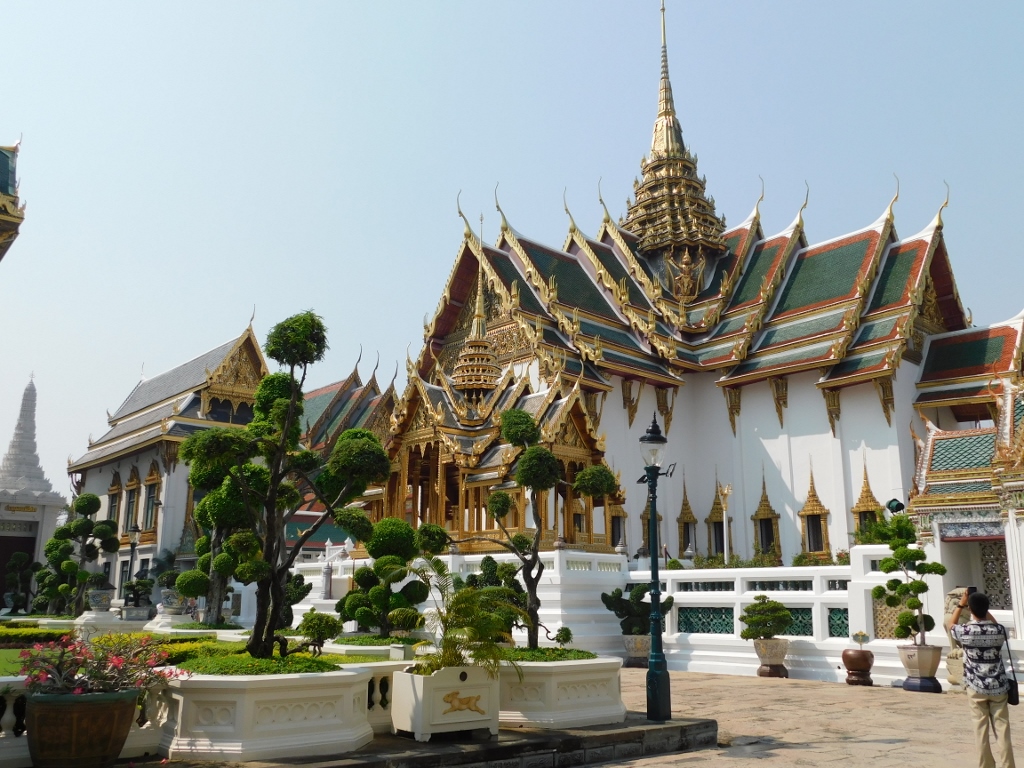 Dusit Maha Prasat Hall
Dusit Maha Prasat Hall
Here are a couple more photos of the Dusit Maha Prasat Hall and its roof.
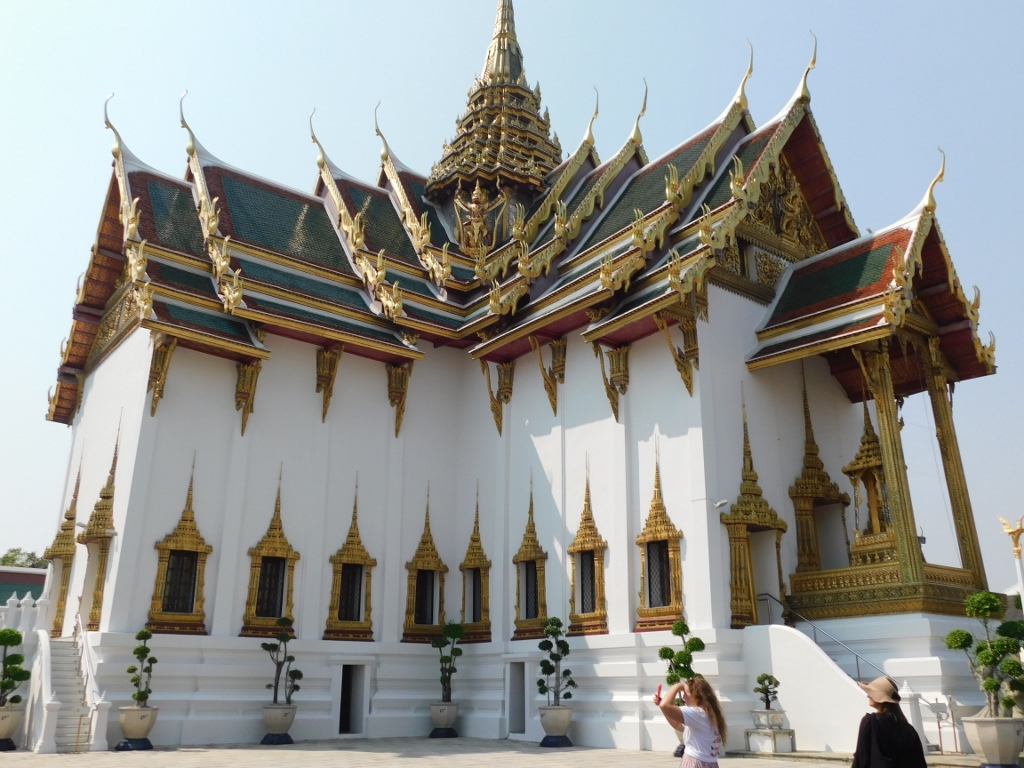 Dusit Maha Prasat Hall
Dusit Maha Prasat Hall
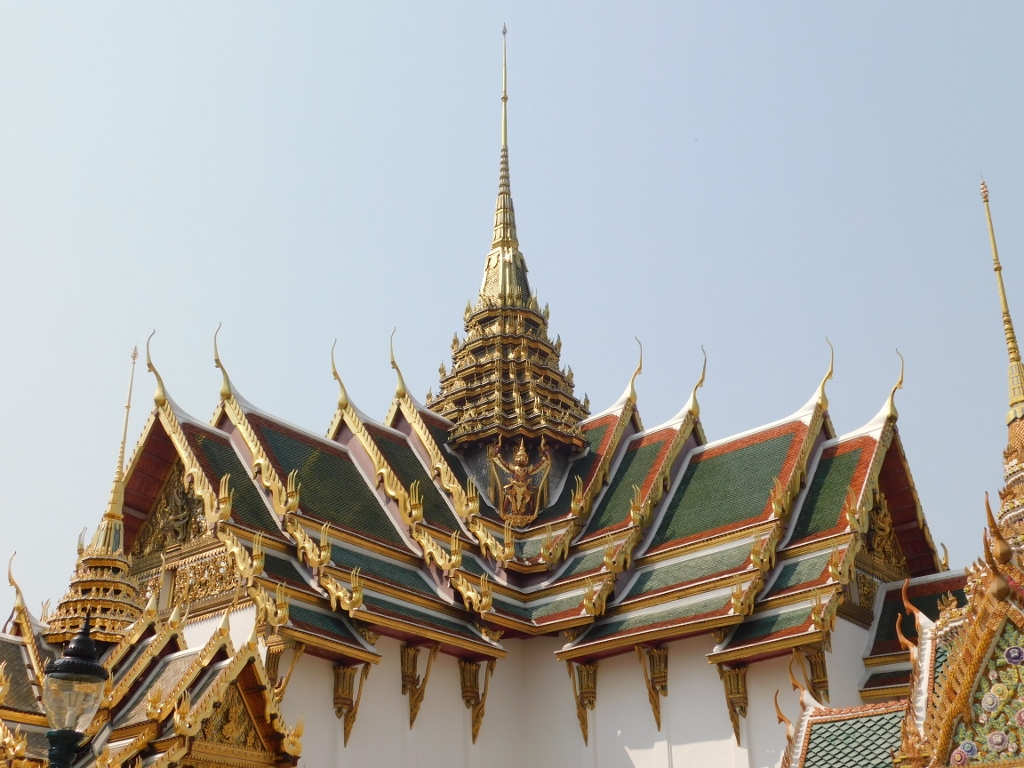 Dusit Maha Prasat Hall, a detail
Dusit Maha Prasat Hall, a detail
Here I finally managed to find a shaded area for visitors, so I was able to take nice photos of the previously seen, but also the most striking buildings within the Grand Palace – the Chakri Mahaprasat, Dusit Maha Prasat Hall and Aphorn Phimok Prasat pavilion. By the way, the pavilion was used for the king to exit his palanquin or to climb into it.
 Grand Palace, a detail
Grand Palace, a detail
After my head cooled down a bit, I went out again into the intense sun and took a few more photos. In the next one, you can see the Dusit Maha Prasat Hall on the left, while on the right, there are some pavilions. Additionally, in the middle and far right, you can see the gates leading out of the complex.
 Grand Palace, a detail
Grand Palace, a detail
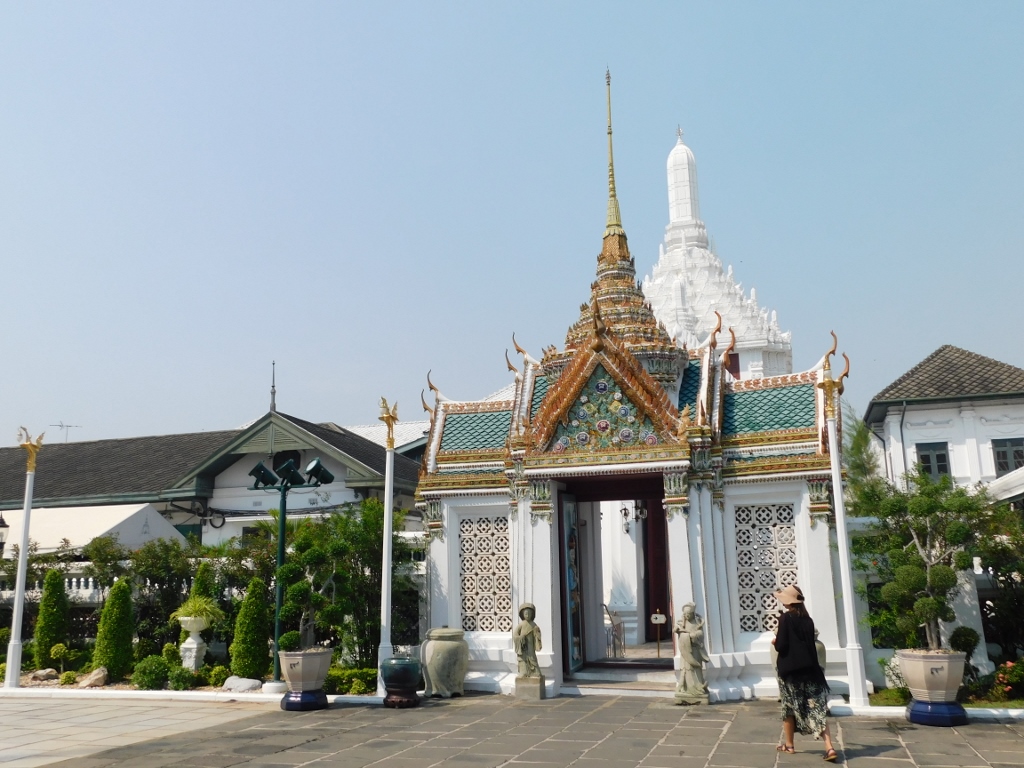 Grand Palace, a detail
Grand Palace, a detail
With this I finished my tour of the Grand Palace, just in time for my meeting with Raša, a friend of a friend who had been living and working in Bangkok for several years. Our plan was to meet at an underground station, so I walked there. This route took me along the outer side of the Grand Palace complex, allowing me to see the rooftops and upper parts of various monuments within the Wat Phra Kaew temple.
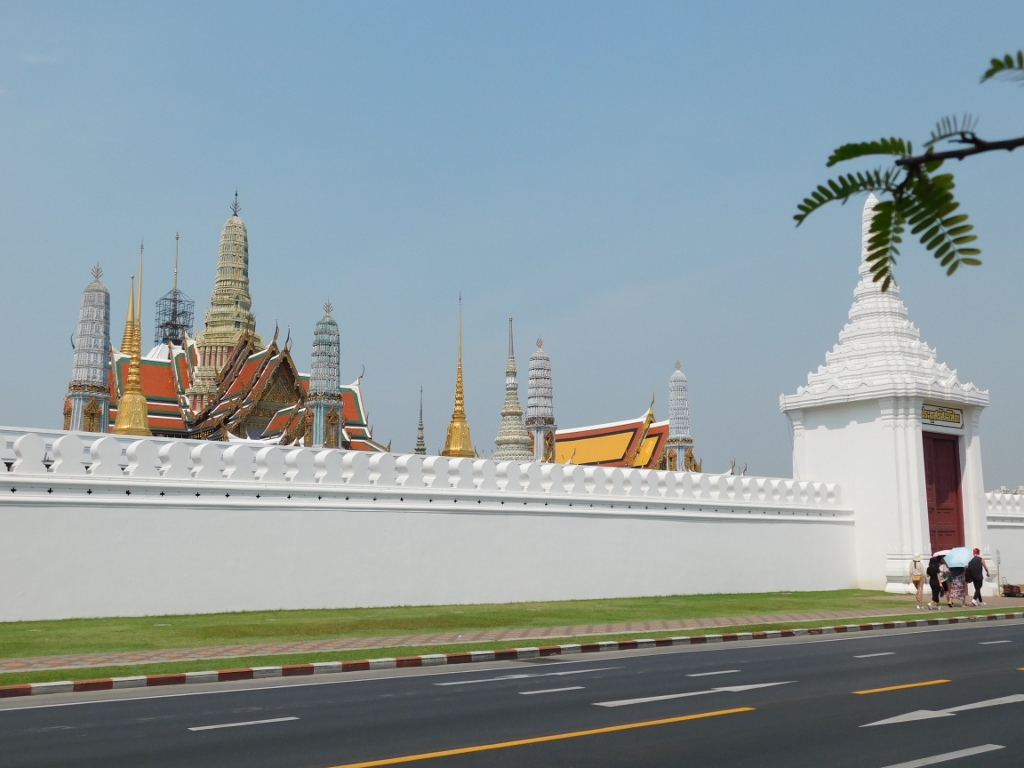 Wat Phra Kaew temple, a detail
Wat Phra Kaew temple, a detail
I also passed by the Suthaisawan Prasat building that belongs to the Grand Palace, but is positioned directly along the wide avenue. The reason is very specific. As it may be noticed in the following photograph, in the middle of this structure, on the upper floor, there is a balcony. Besides the fact that the king holds public audiences here, from this balcony, he can also observe military parades that evidently pass through this area.
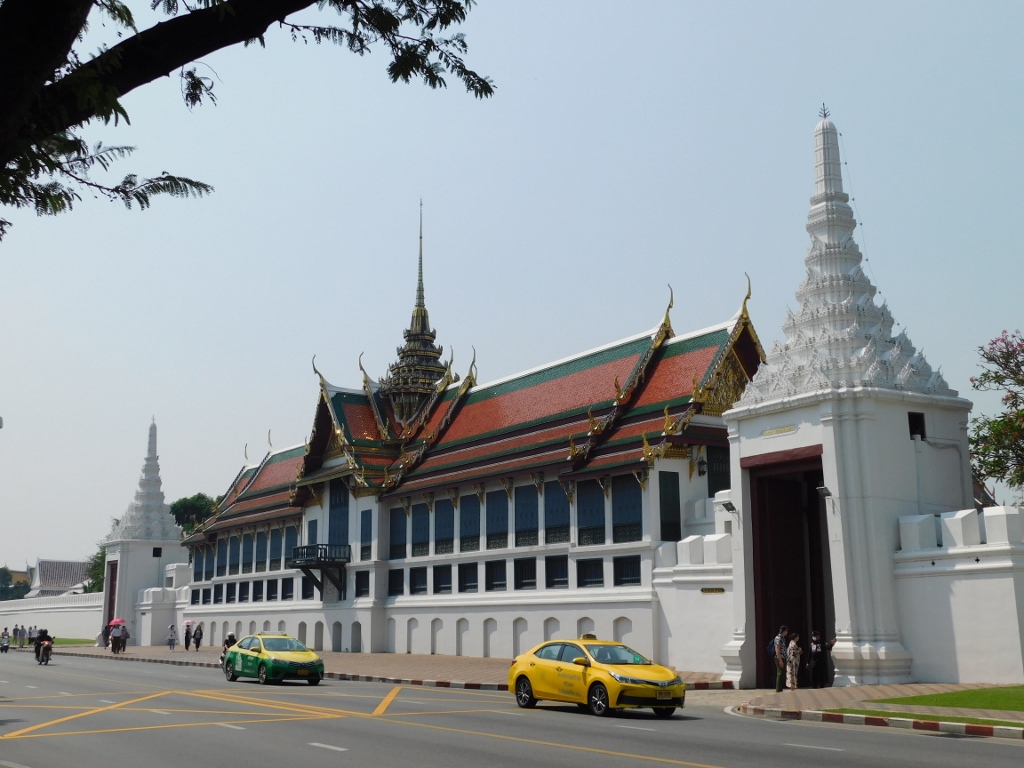 Suthaisawan Prasat
Suthaisawan Prasat
On the other side of the street, right where I was walking, there is a park, allowing me to be in the shade, which made it much easier for me. The view of the greenery was quite beautiful as well, but I didn’t enter the park; instead, I followed the path beside it.
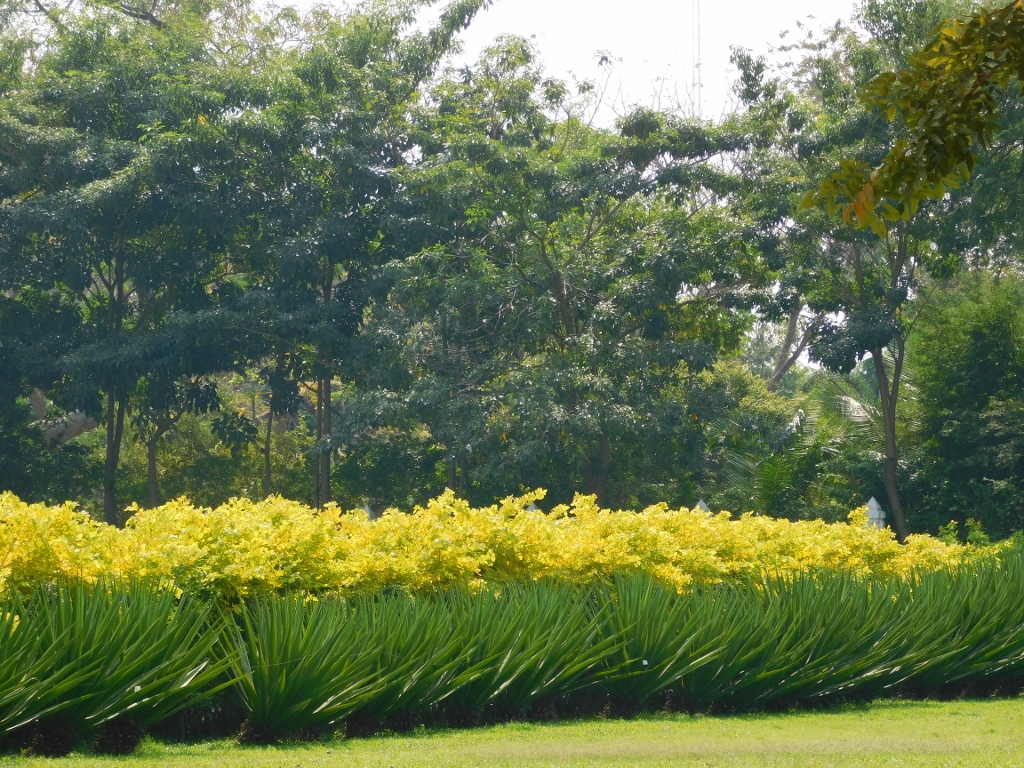 Part of a park in Bangkok
Part of a park in Bangkok
Here I passed by a specimen of the always impressive banyan tree (Ficus benghalensis).
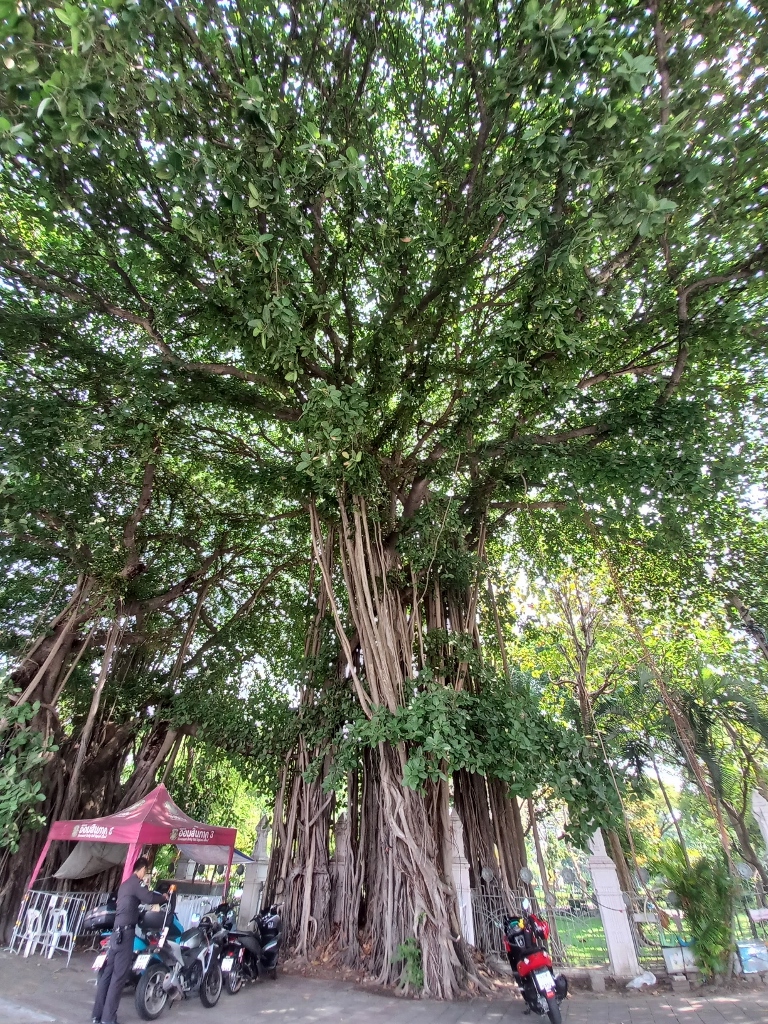 Part of a park in Bangkok
Part of a park in Bangkok
Along the way, I took a short break at a café in order to get some refreshment and shortly after I met with Raša at the agreed-upon location.
As it would turn out, Raša and I have a bunch of mutual contacts. Besides being a friend of the friend who provided me with his contact, he is also friends with another one of my friends and two of my colleagues. I think it was meant for us to meet and socialise.
We were both punctual and he first asked me what I would like to do and where I would like to go, offering his suggestions as well. As it turned out, our interests aligned perfectly. We were close to Chinatown, which was a part of the city I wanted to see but hadn’t had the chance yet.
The walk and conversation with Raša were fantastic. He was an excellent host who also loves to travel, so he understands the joys of exploring new places. He had the desire to show me various places, some well-known and some off the beaten path. Perfect!
First, we strolled through an area alongside a canal that has been revitalised in the recent years. This canal is called the Ong Ang Canal.
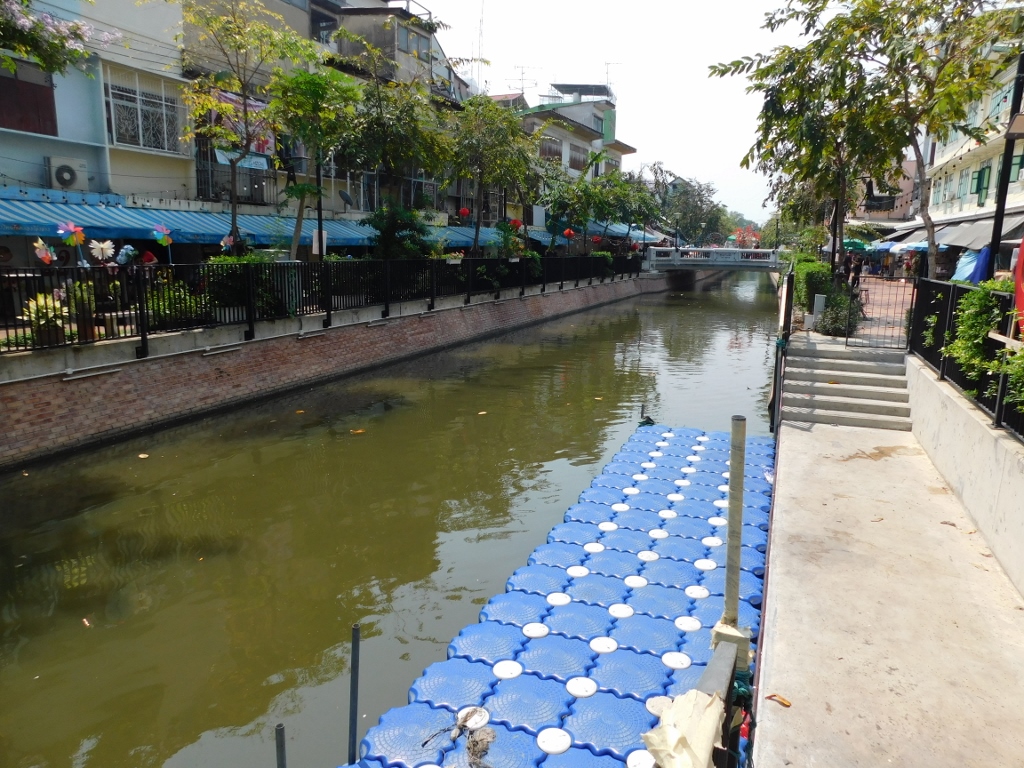 Ong Ang Canal
Ong Ang Canal
This is actually a part of the canal that was constructed at the beginning of King Rama I’s reign, east of the territory designated by the founder of the new dynasty as the location for the new capital. This territory essentially became the island of Rattanakosin. Rattanakosin served as both the name of the capital and the kingdom. I’ve already talked about this before, so I won't go into any details now.
Due to the large population living in Bangkok today and the urban development of the city, the land in the city centre has become quite expensive. Some investors even proposed filling in the canals to obtain the sought-after construction land. Fortunately, this hasn’t happened yet and a part around this canal has been transformed into the Ong Ang Walking Street. It combines tranquillity within the urban jungle of Bangkok, serves as a space for urban artistic aspirations and is a popular destination for both locals and visitors. Raša and I strolled there and it was an exceptionally interesting experience.
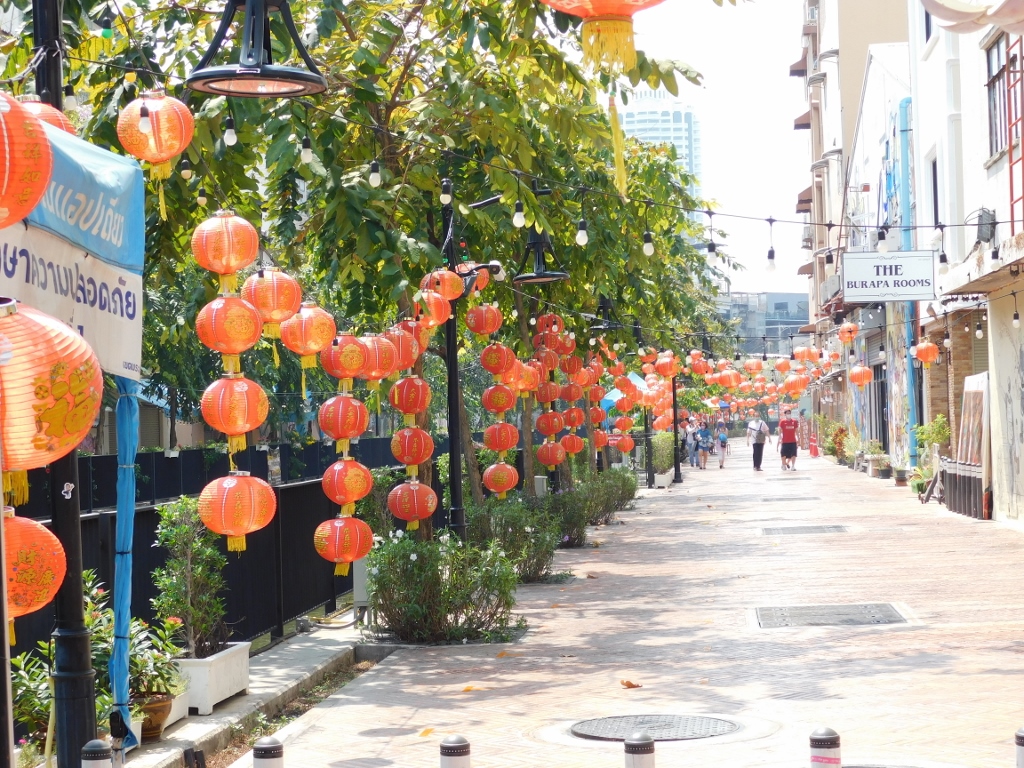 Ong Ang Walking Street, a detail
Ong Ang Walking Street, a detail
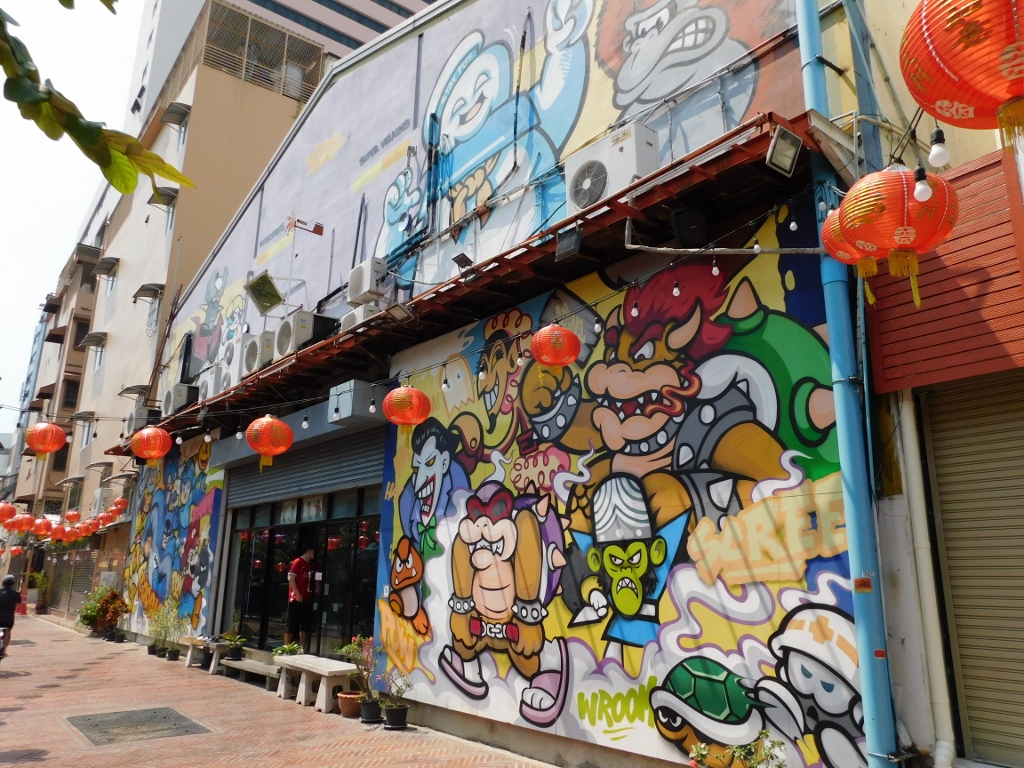 Ong Ang Walking Street, a detail
Ong Ang Walking Street, a detail
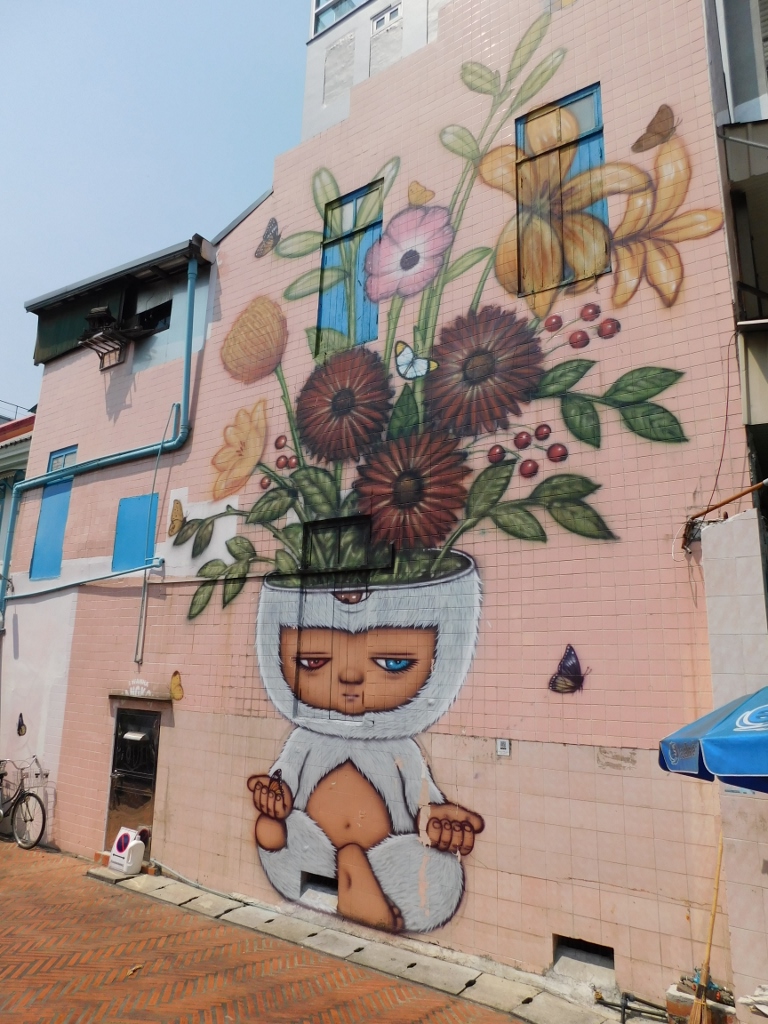 Ong Ang Walking Street, a detail
Ong Ang Walking Street, a detail
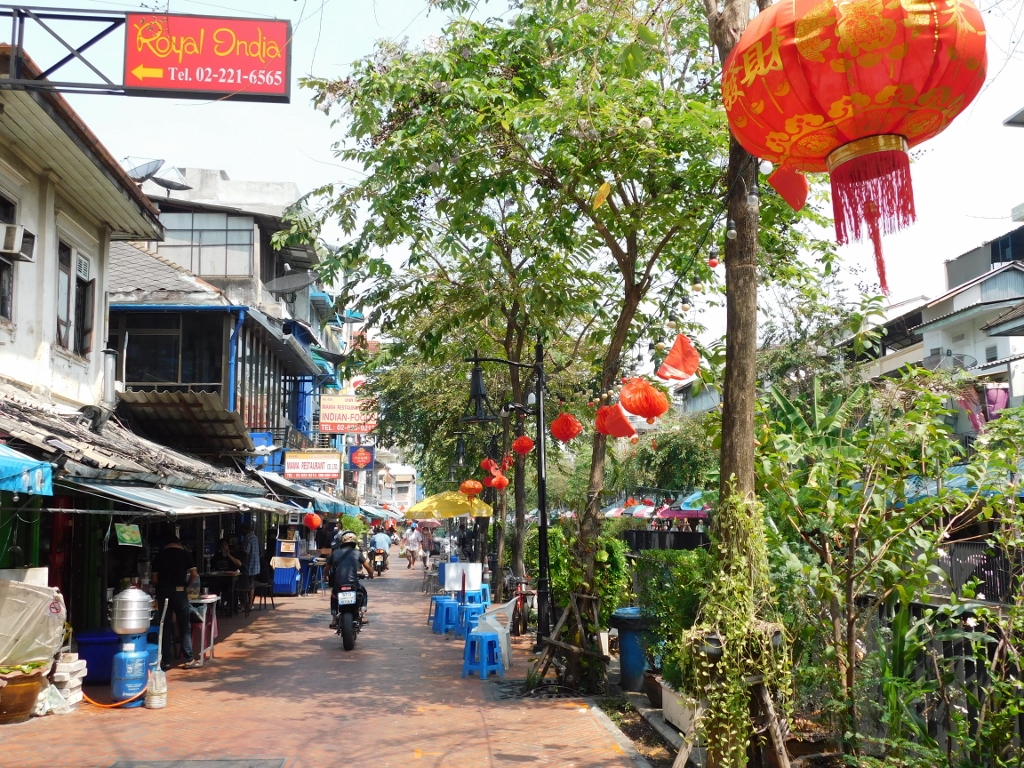 Ong Ang Walking Street, a detail
Ong Ang Walking Street, a detail
The Ong Ang Walking Street extends on both sides of the canal, so at one point we crossed to the other side using one of the bridges.
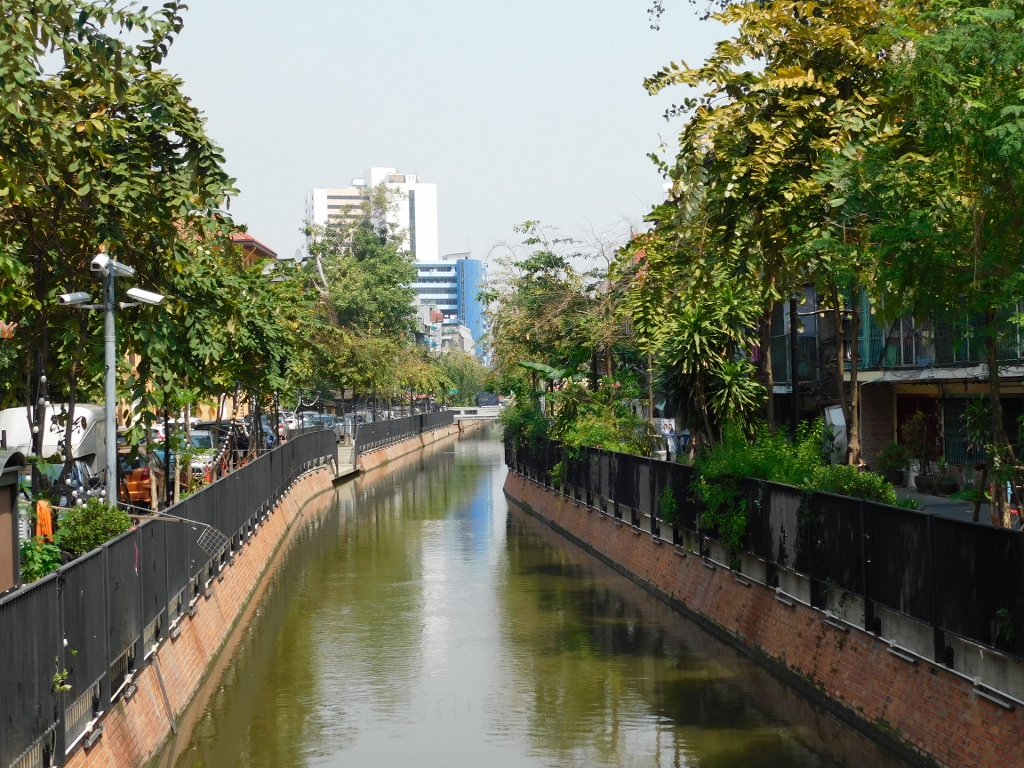 Ong Ang Canal
Ong Ang Canal
There I suddenly spotted a small lizard and from what I could later find out, it was a baby Asian water monitor (Varanus salvator). Adult monitors typically grow up to 2 meters, but this one was obviously a much smaller specimen, hence my conclusion about it being a juvenile.
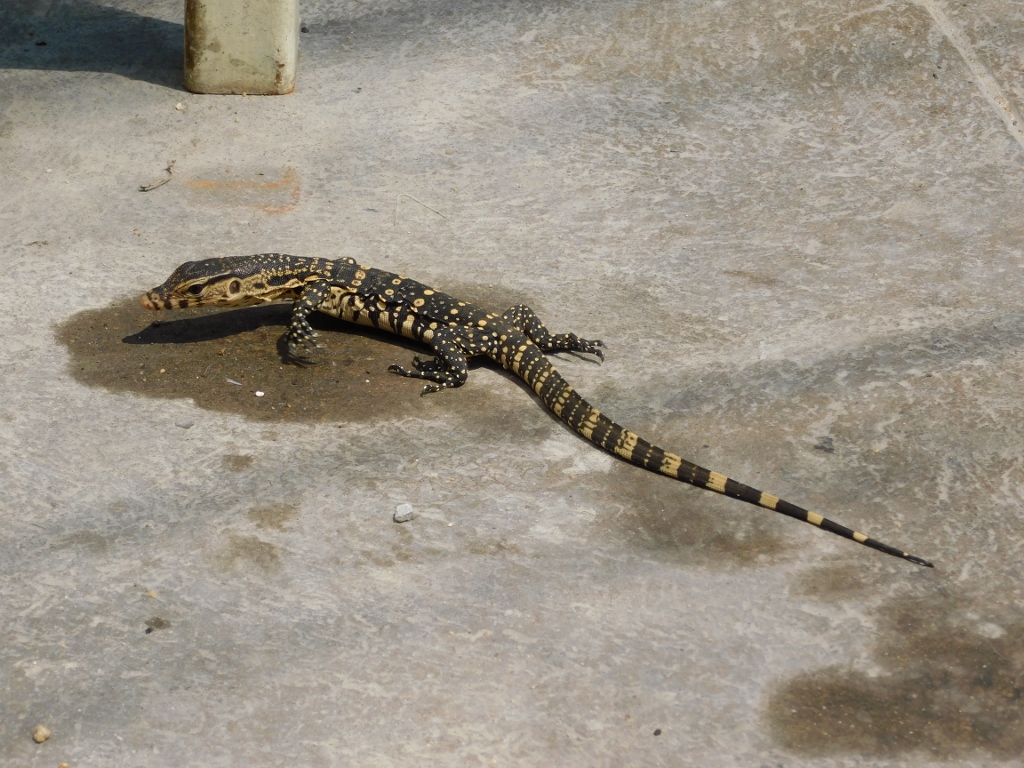 Asian water monitor, a baby
Asian water monitor, a baby
As for the other side of the promenade, besides more shade there, it also seemed much more colourful. Here, specifically, two shrines were placed side by side – one predominantly yellow and the other predominantly red.
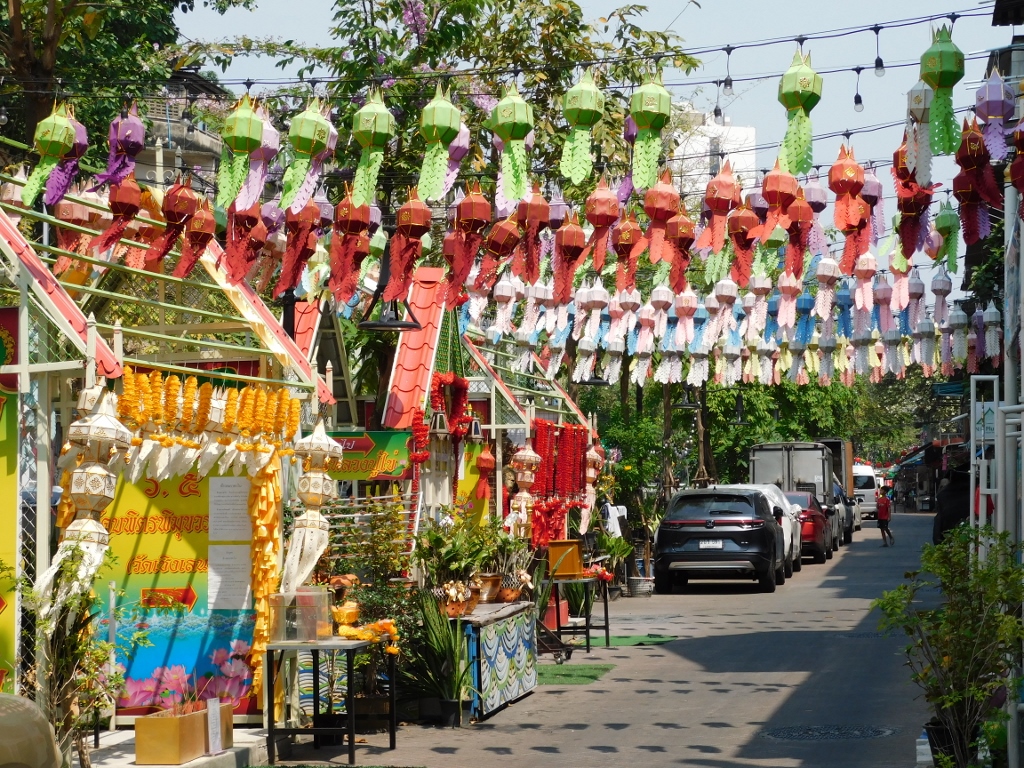 Ong Ang Walking Street, a detail
Ong Ang Walking Street, a detail
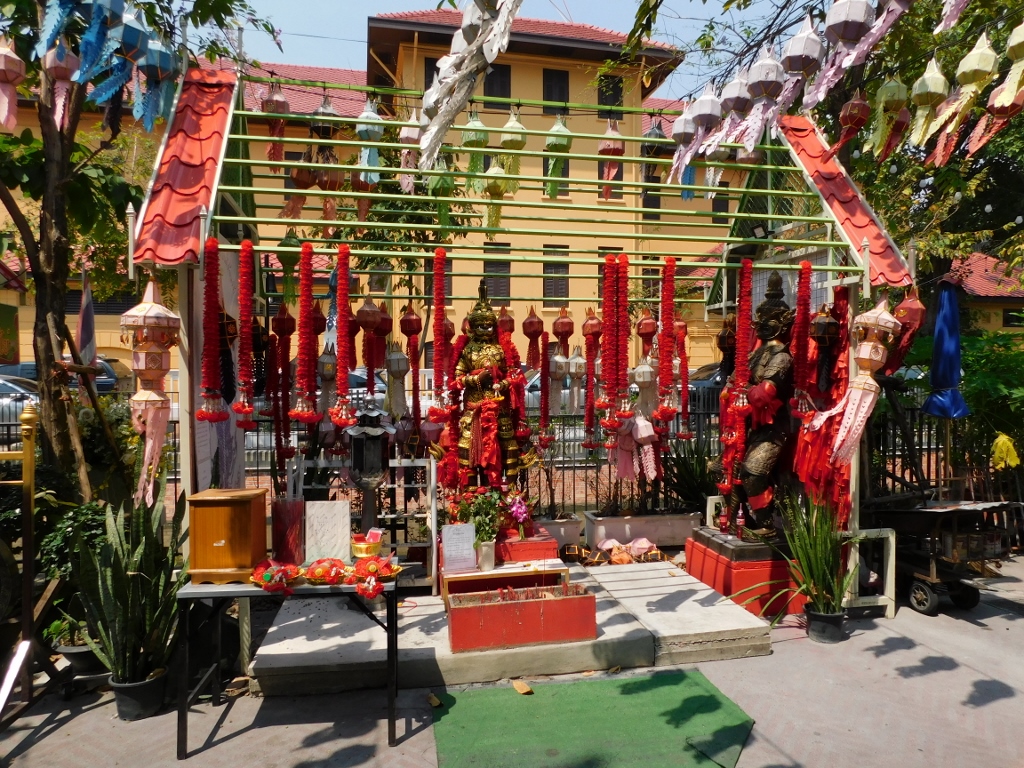 Ong Ang Walking Street, a detail
Ong Ang Walking Street, a detail
On the other hand, in Bangkok, as well as throughout Thailand, food is never too far away and that is the case at the Ong Ang Walking Street as well. Raša and I left the food for a little later, so I just took photos here.
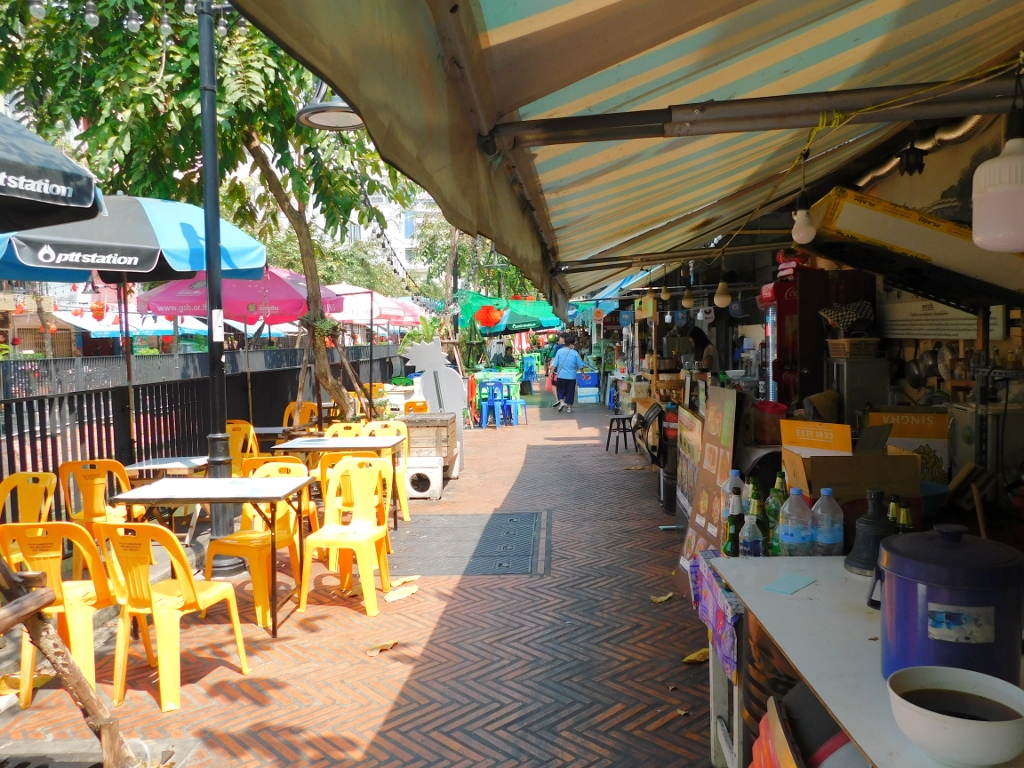 Ong Ang Walking Street, a detail
Ong Ang Walking Street, a detail
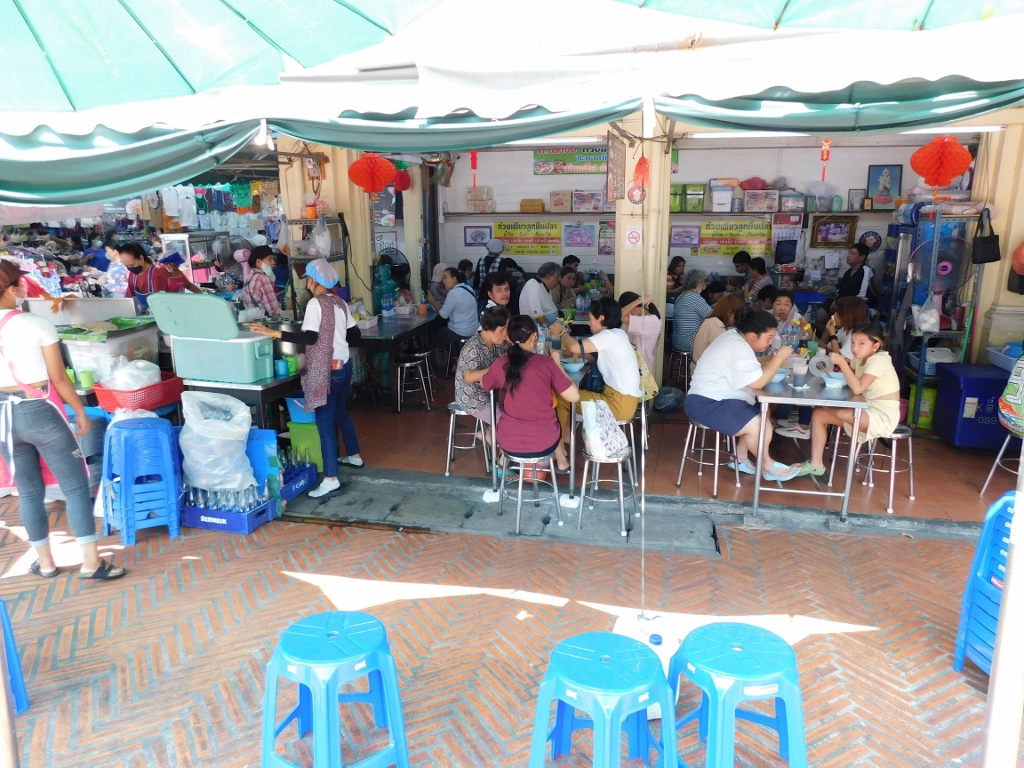 Ong Ang Walking Street, a detail
Ong Ang Walking Street, a detail
And then Raša took me through some alleys where the images and scenes were as simple as they were wonderful. I enjoyed it thoroughly and was grateful to my wonderful host and guide.
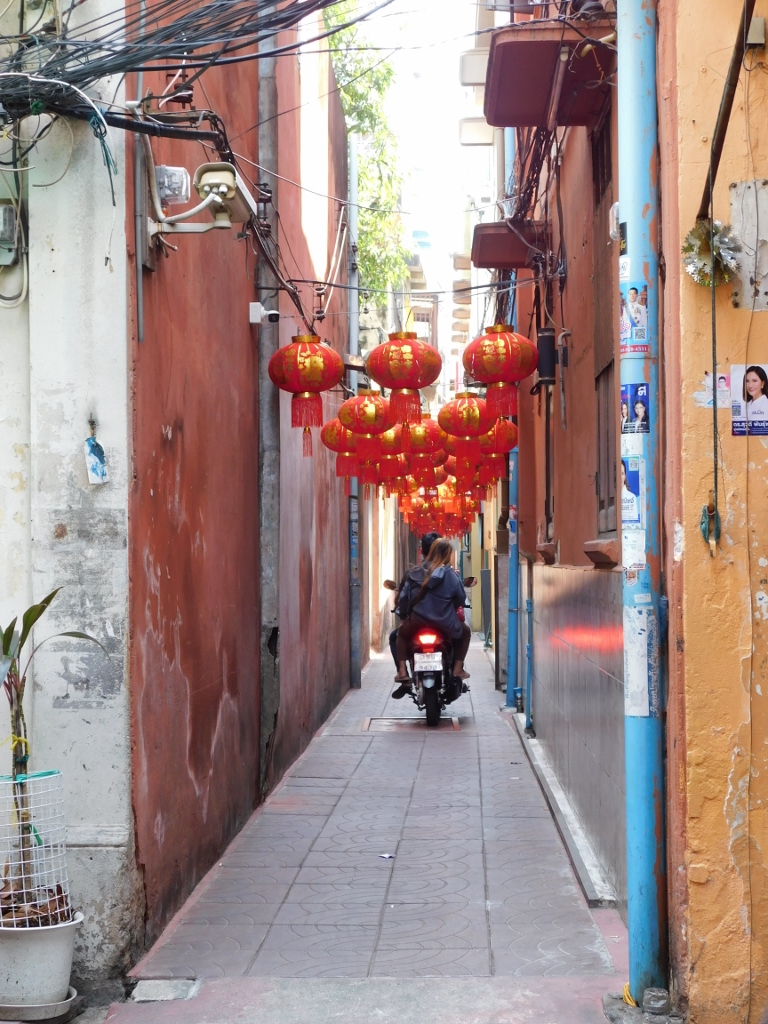 Area around the Ong Ang Walking Street, a detail
Area around the Ong Ang Walking Street, a detail
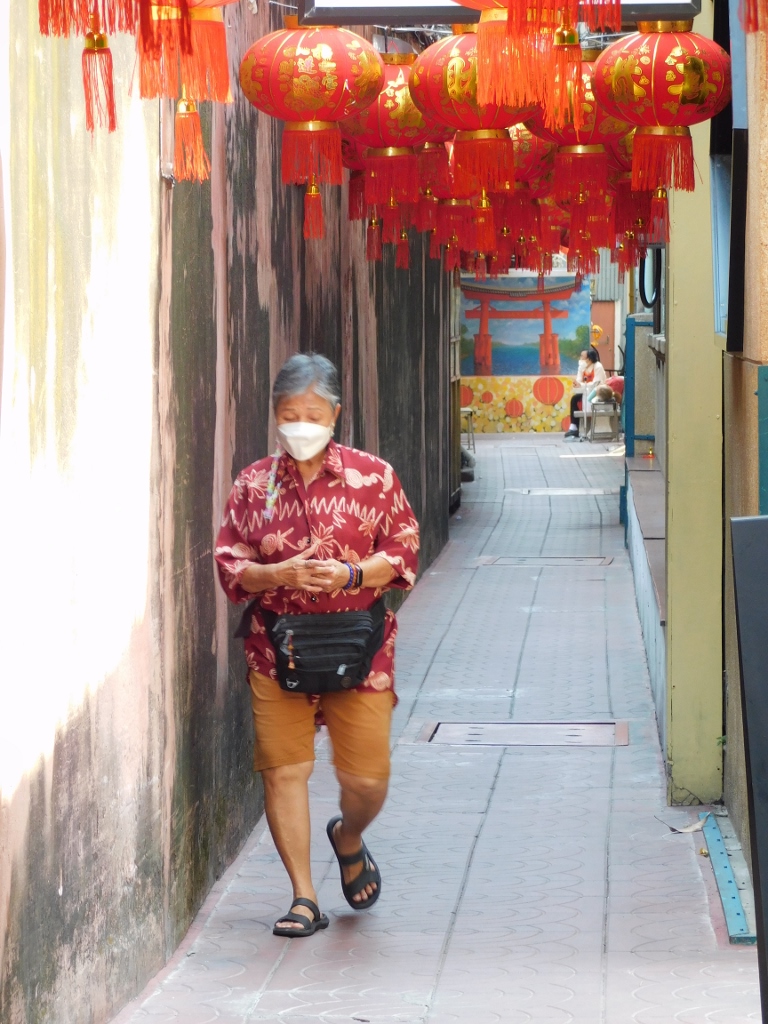 Area around the Ong Ang Walking Street, a detail
Area around the Ong Ang Walking Street, a detail
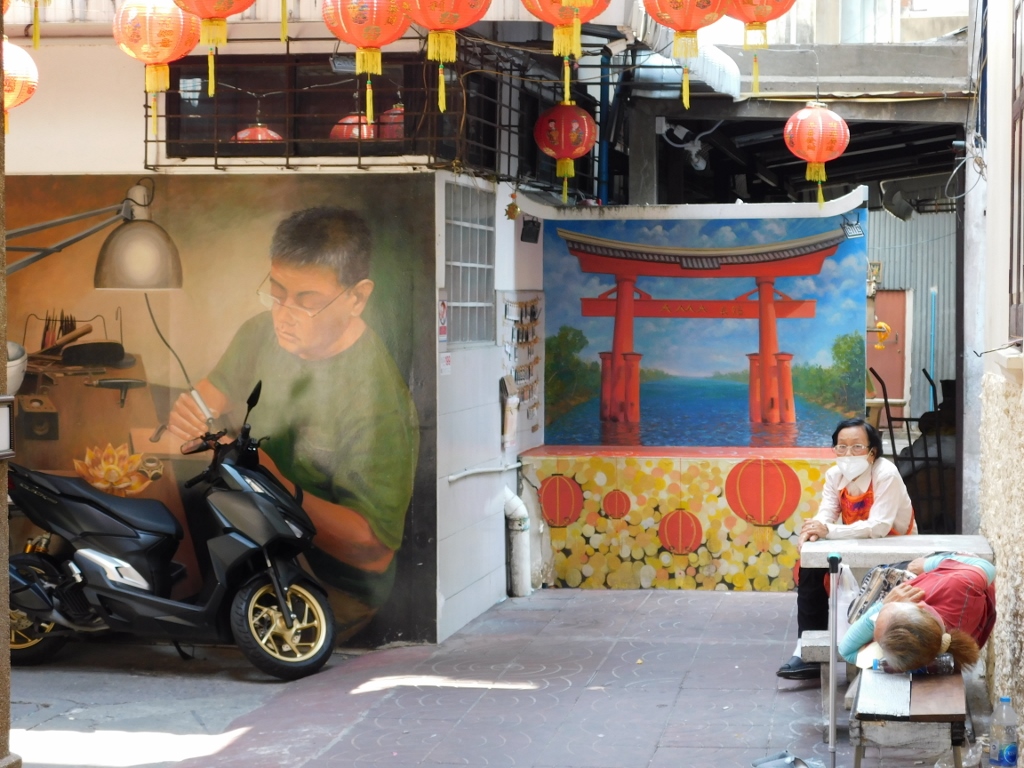 Area around the Ong Ang Walking Street, a detail
Area around the Ong Ang Walking Street, a detail
However, we had to move on, so we first returned to the canal itself and then continued to the Chinatown, which wasn’t far away.
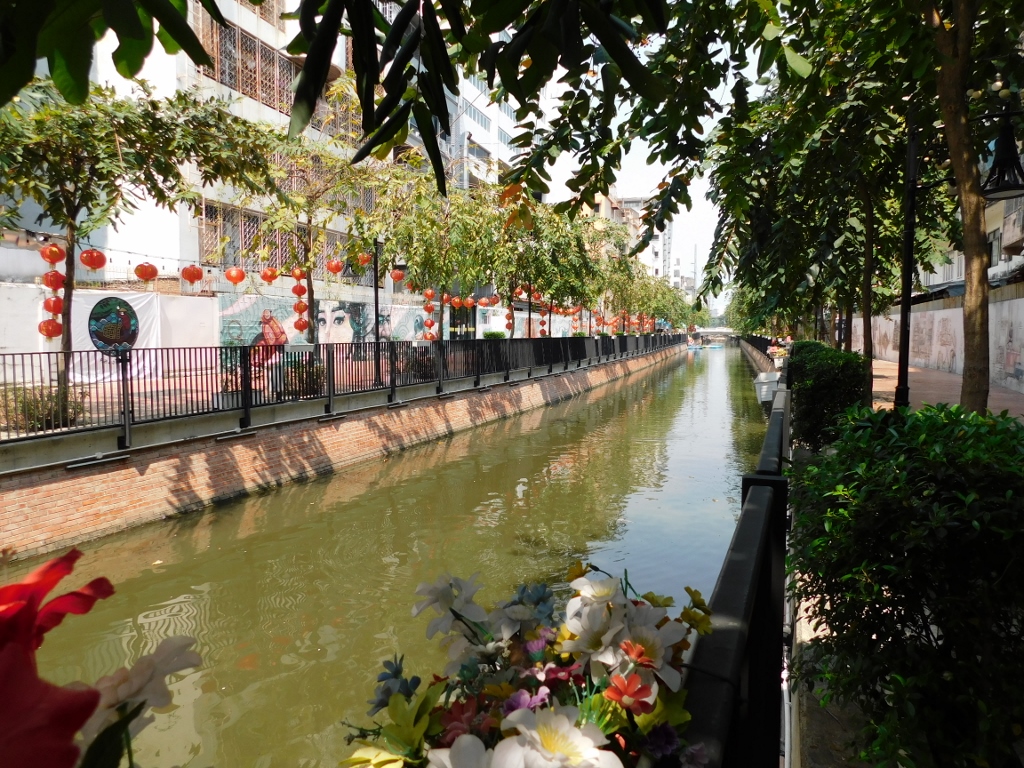 Ong Ang Canal
Ong Ang Canal
There, we first went to the fantastically picturesque Chinatown market.
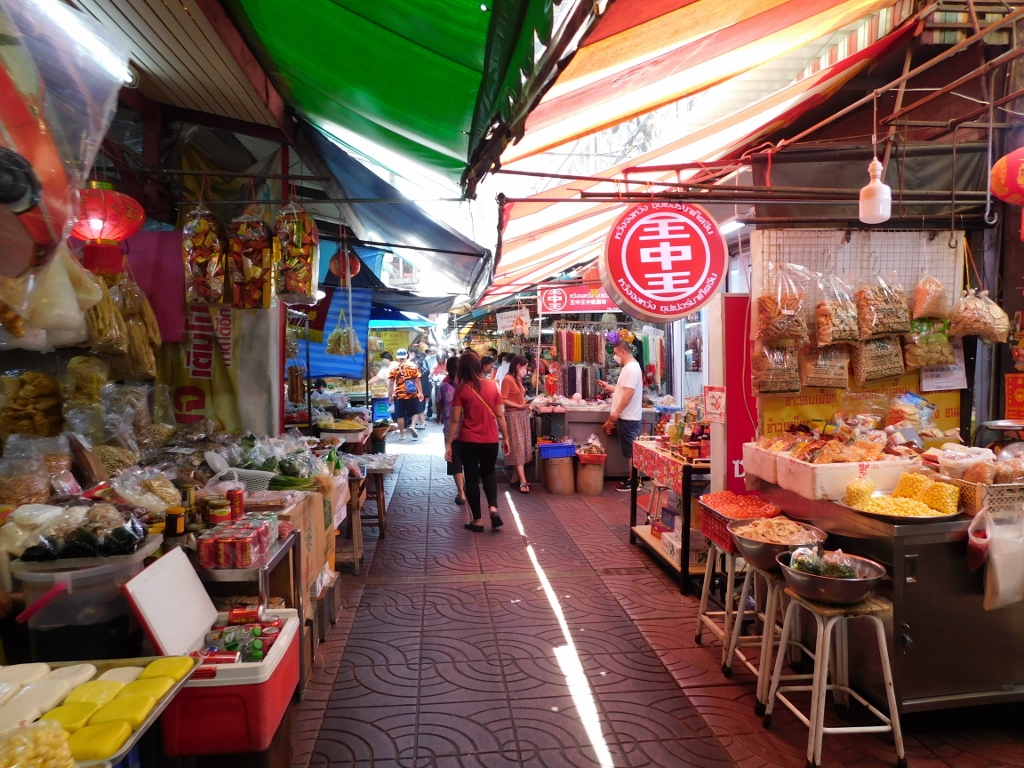 Chinese Market in Bangkok’s Chinatown
Chinese Market in Bangkok’s Chinatown
When King Rama I decided to create the artificial island of Rattanakosin and build his capital and the Grand Palace, it turned out that there was already a significant local Chinese community in the area. The king requested them to move outside the capital, surrounded by the newly built walls, and the Chinese community complied by moving east of the canal and establishing a new commercial centre. Given the large number of Chinese people living and doing business here, it’s entirely normal that there are temples used by them. On the other hand, there were already Chinese residents here before the relocation, so some temples date back even earlier.
One of the numerous temples is located right next to the Chinatown market. It’s the Leng Buai Ia Shrine, built in the traditional Chinese architectural style. It is considered the oldest Chinese temple in Thailand, as records show it was constructed in 1658.
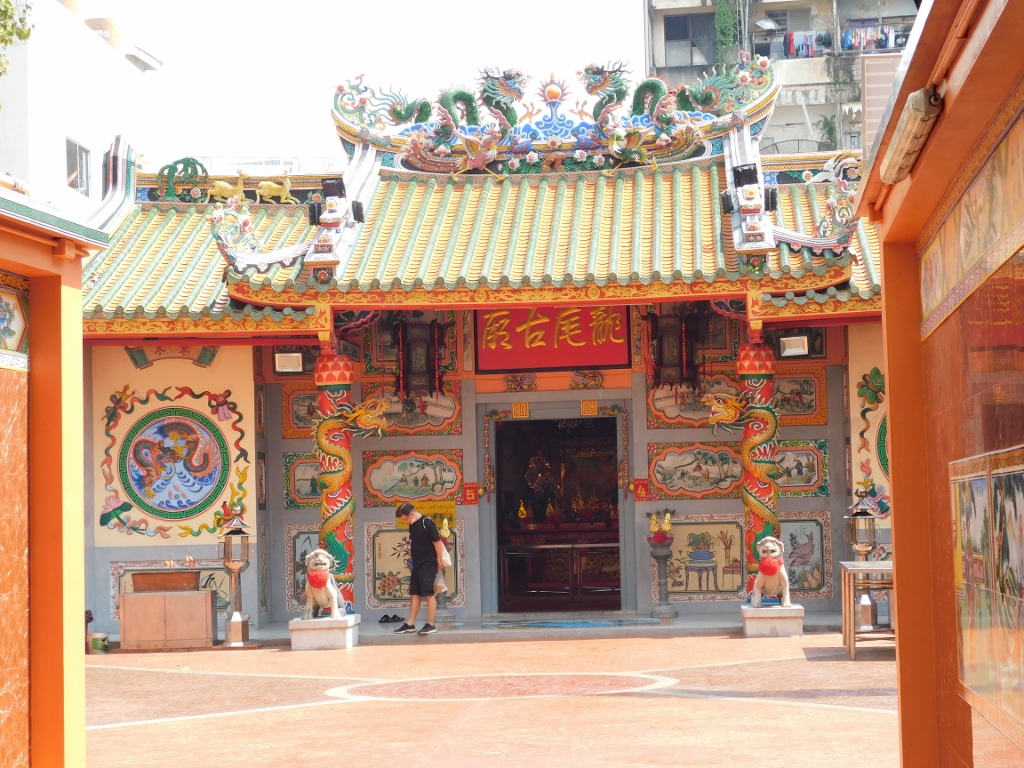 Leng Buai Ia Shrine
Leng Buai Ia Shrine
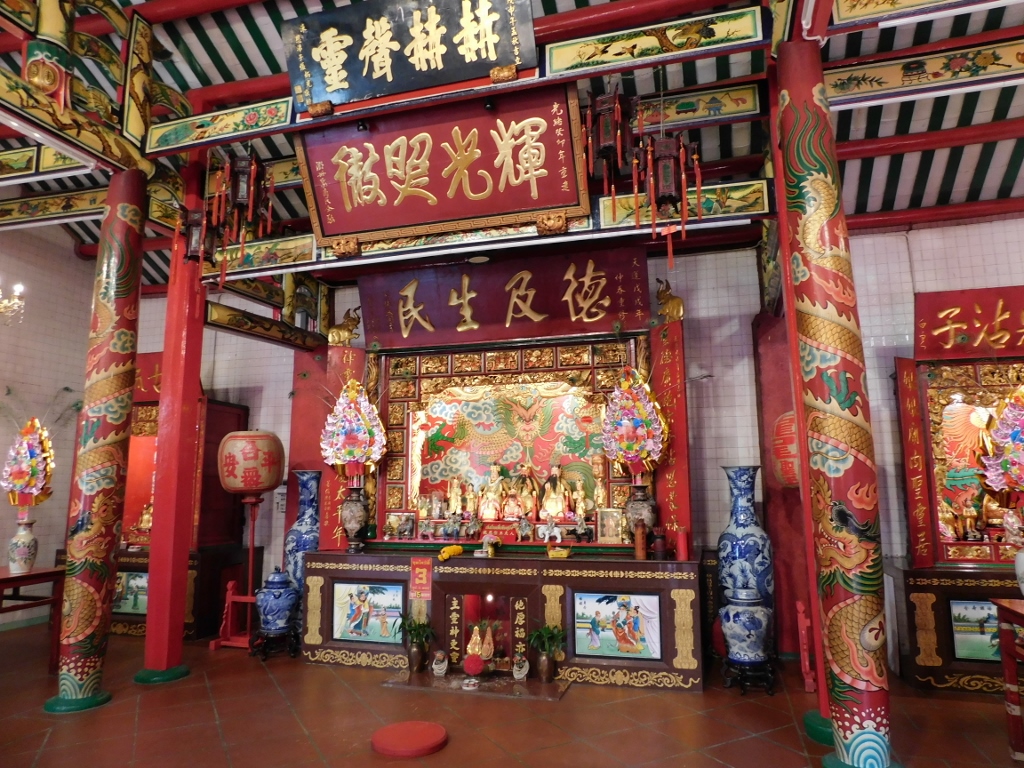 Leng Buai Ia Shrine, a detail
Leng Buai Ia Shrine, a detail
However, even though Raša pointed out this temple, we actually came to the market to observe the stalls and the food being sold there. It was a spectacular display of colours and variety, but often confusing as well.
 Chinese Market, a detail
Chinese Market, a detail
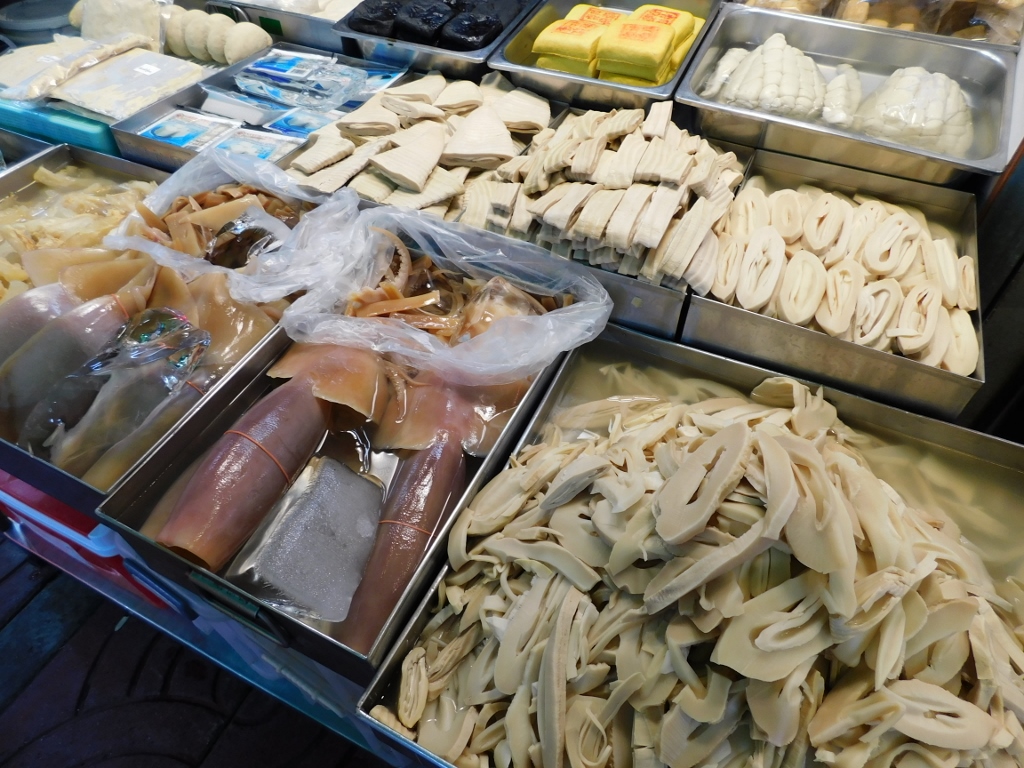 Chinese Market, a detail
Chinese Market, a detail
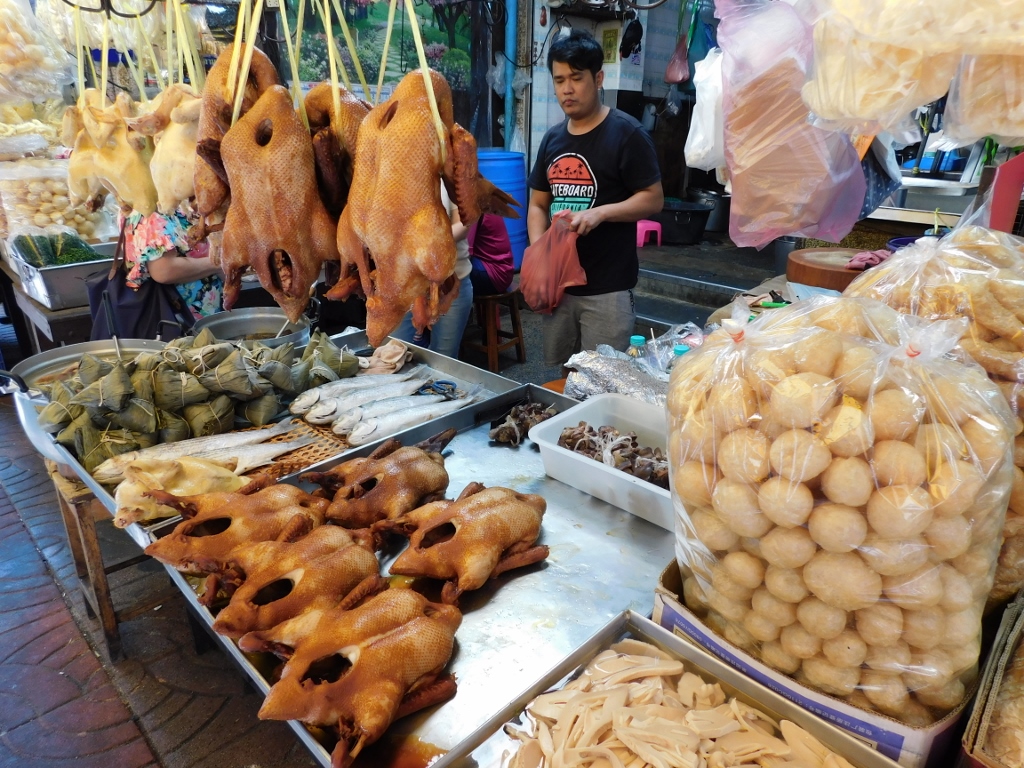 Chinese Market, a detail
Chinese Market, a detail
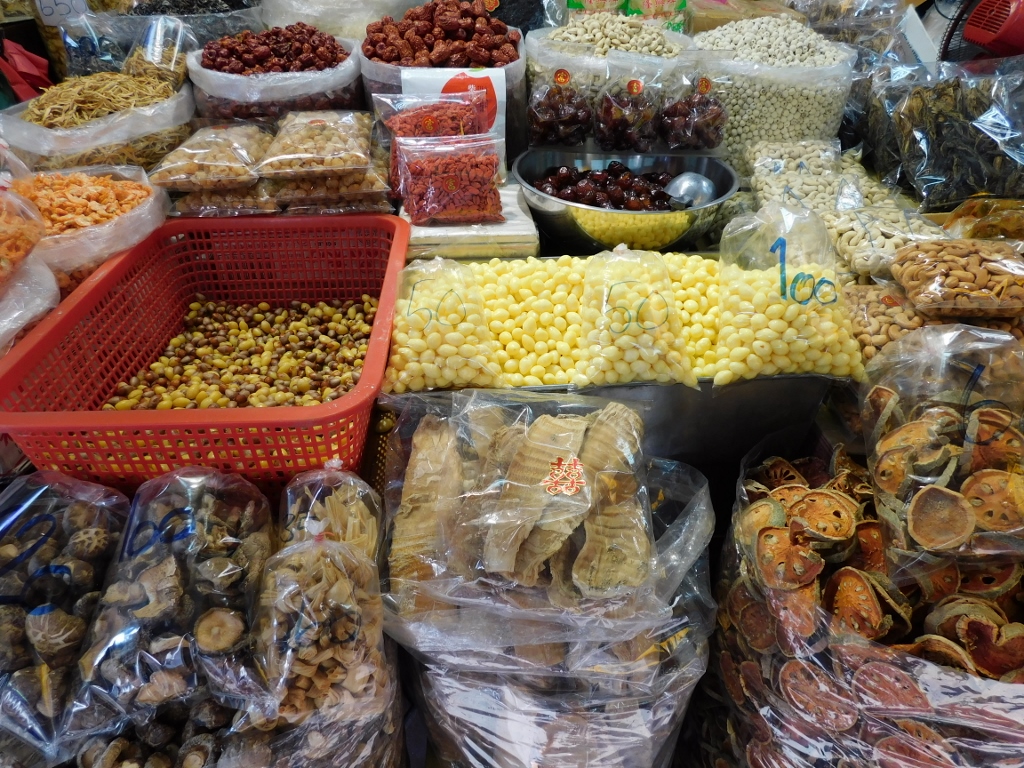 Chinese Market, a detail
Chinese Market, a detail
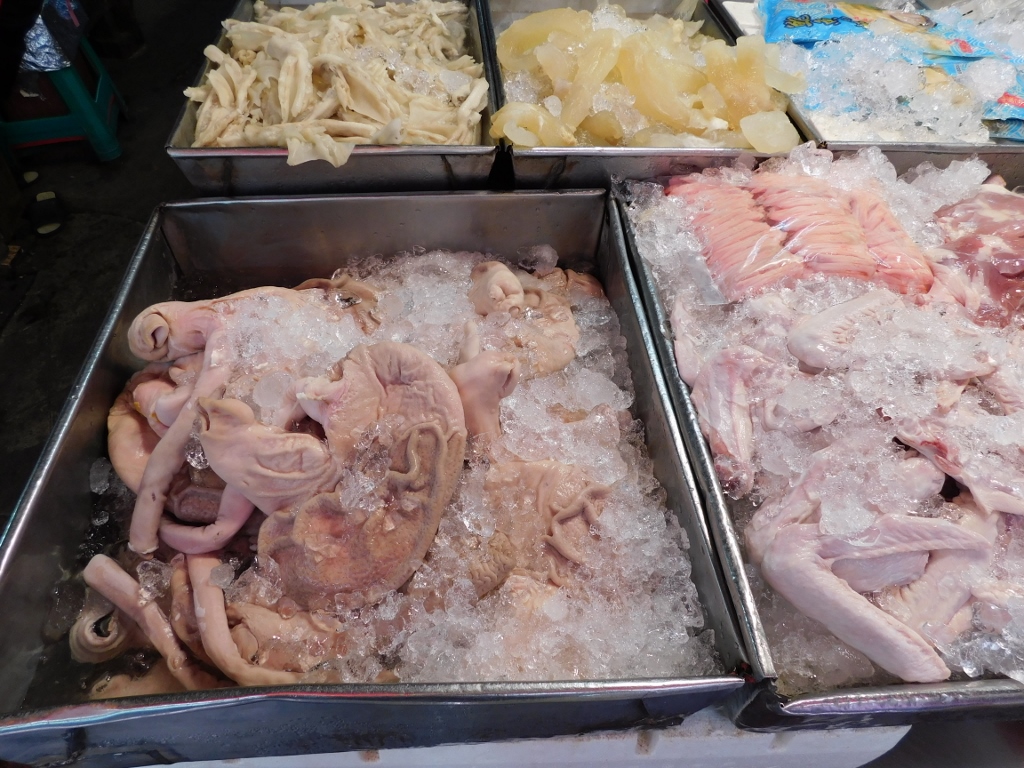 Chinese Market, a detail
Chinese Market, a detail
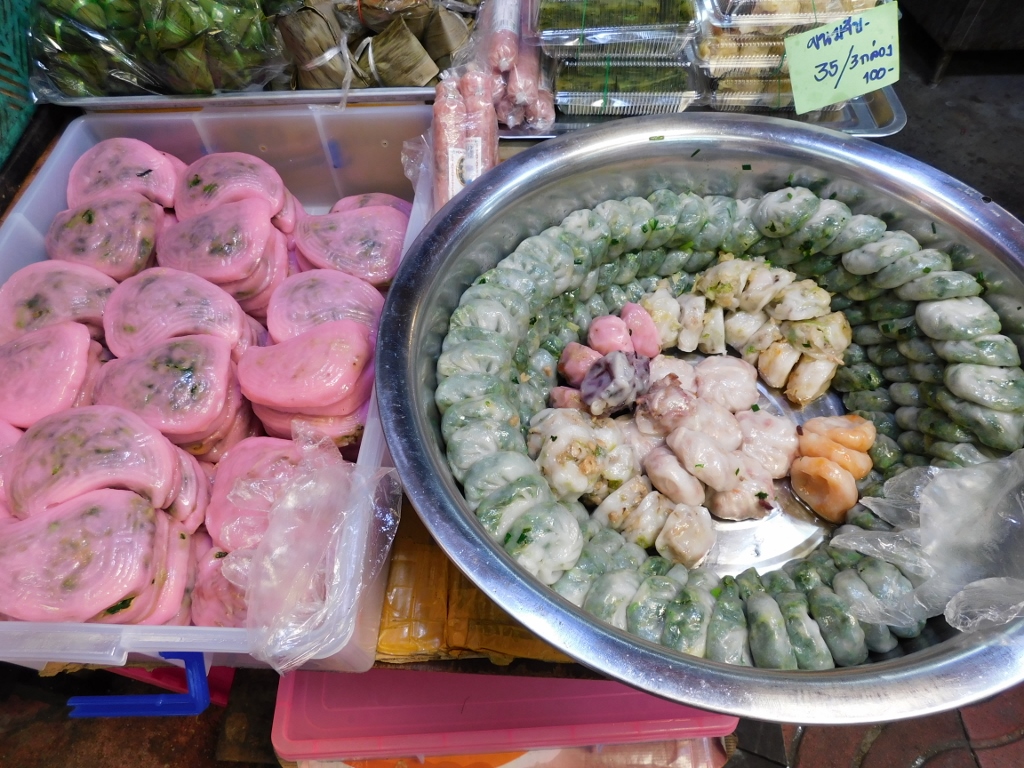 Chinese Market, a detail
Chinese Market, a detail
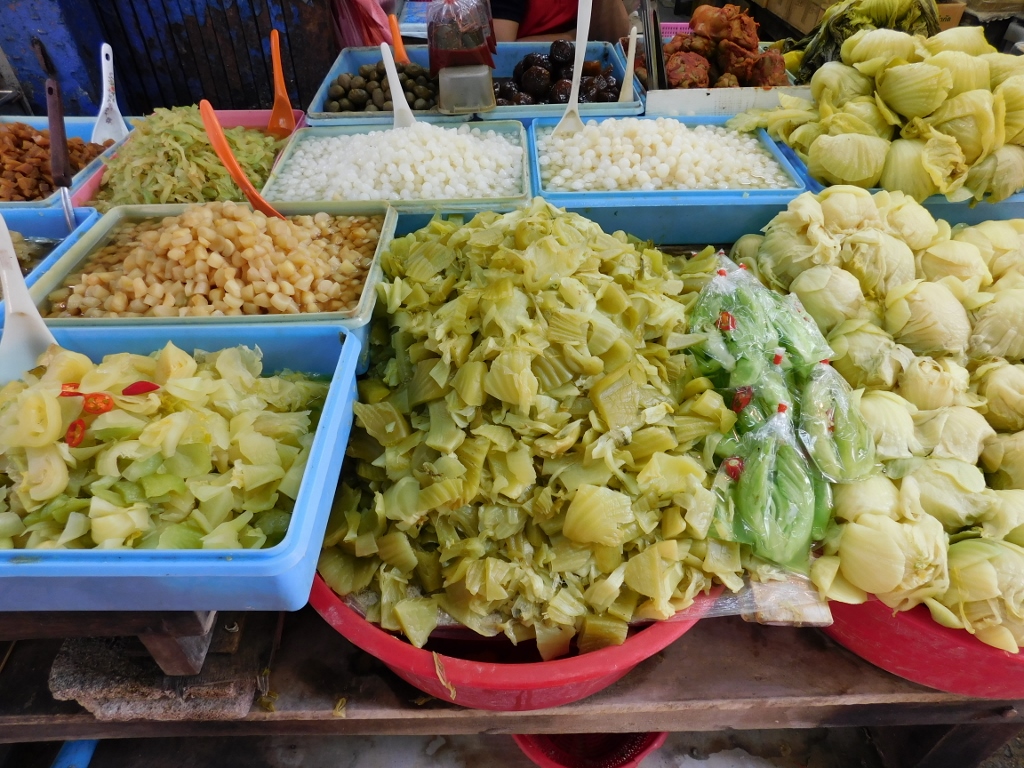 Chinese Market, a detail
Chinese Market, a detail
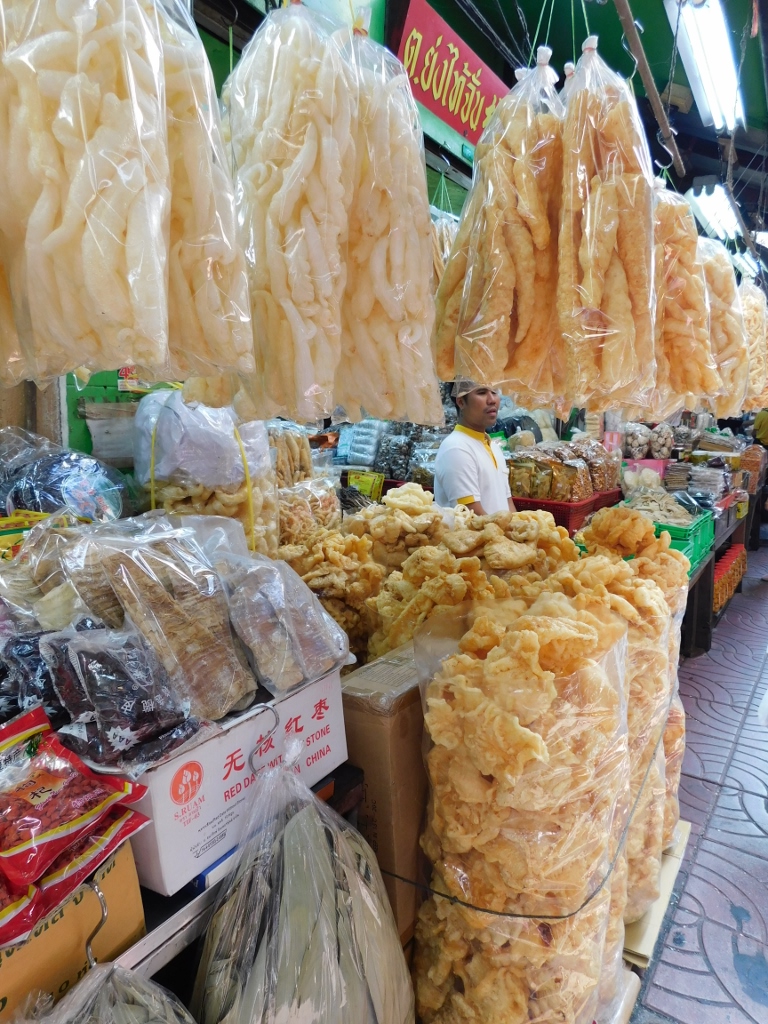 Chinese Market, a detail
Chinese Market, a detail
While I didn’t know what most of these products I saw were or how they were used, I still got hungry, as did Raša, so we went to a Chinese restaurant where we had chrysanthemum tea and wontons prepared in two ways, but what particularly thrilled me were dumplings filled with black sesame and served in ginger tea. I just found my favourite Chinese dessert.
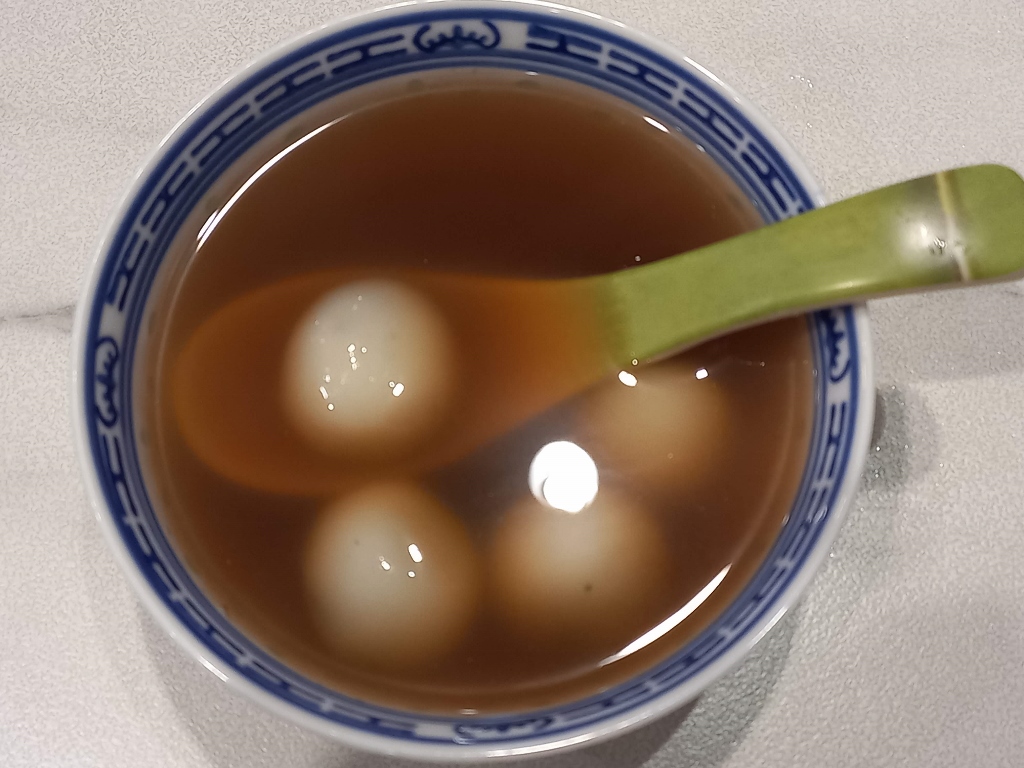 Chinese Market, a detail
Chinese Market, a detail
After the delightful lunch, we strolled a bit more around the market area, where I admired various street food items and then we headed towards the Chao Phraya River.
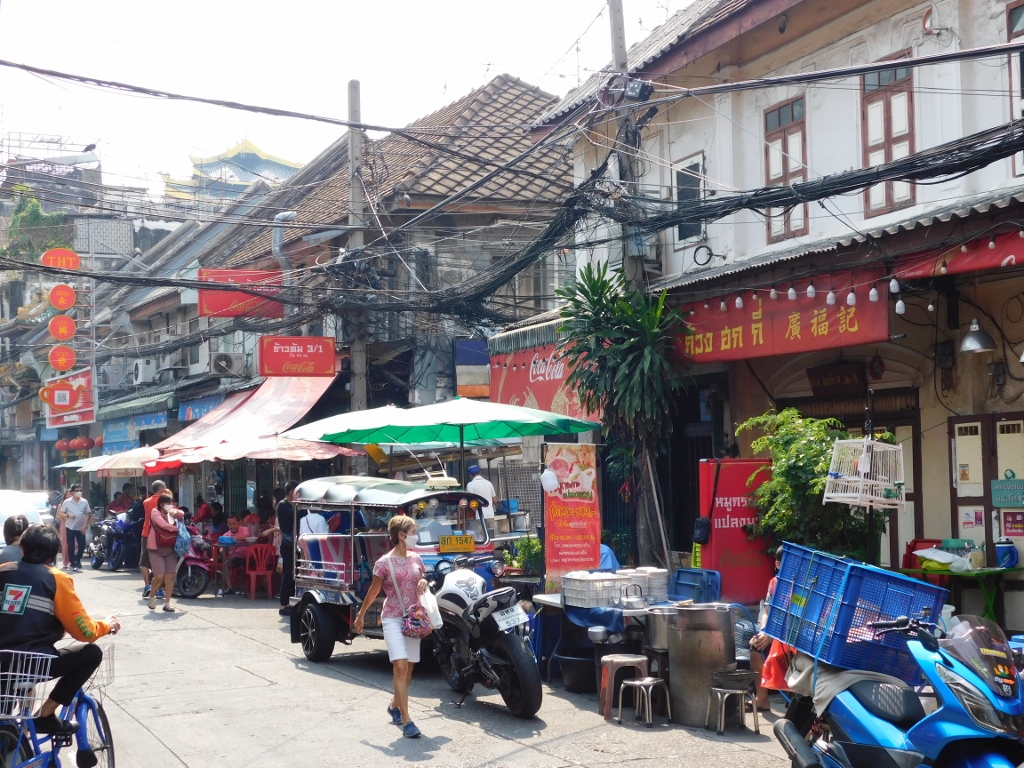 Chinatown, a detail
Chinatown, a detail
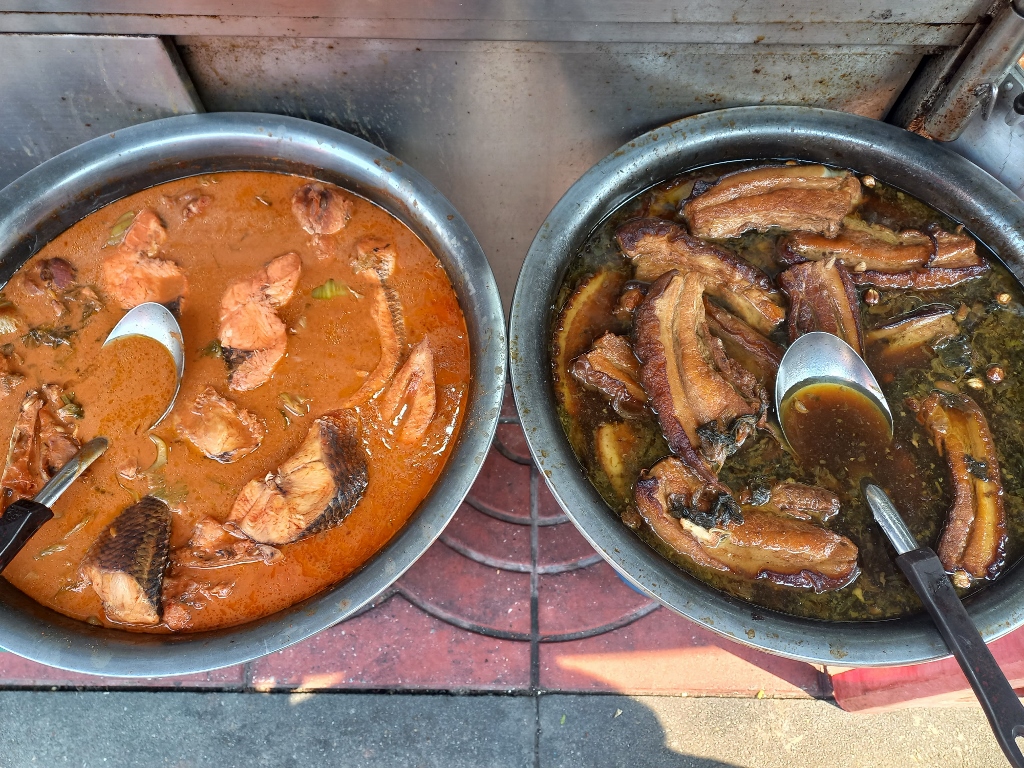 Street food in Chinatown
Street food in Chinatown
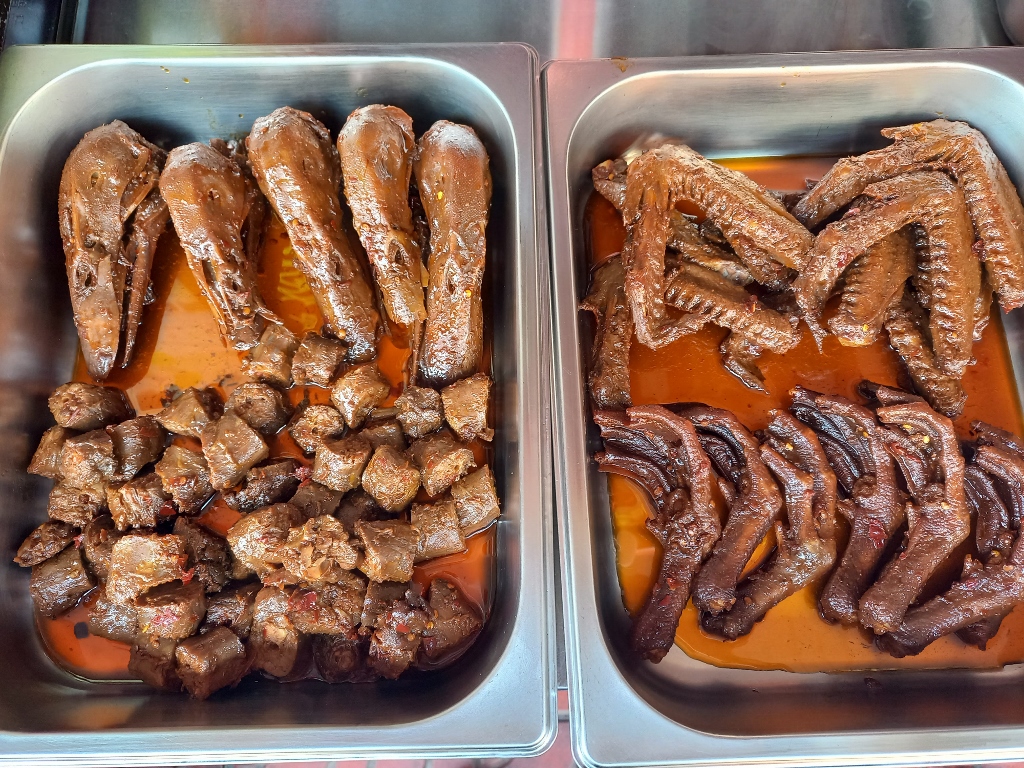 Street food in Chinatown
Street food in Chinatown